|
2 Comments
Check out my article on India Someday
about the Golden Temple, where the positive energy is almost beyond belief! click here Check out my article for National Bike Month in Huffington Post! Traveling the World....A Lady and Her Bicycle click here ......So you can imagine my excitement when, back in my New York humdrum life, I stumbled upon a book about Annie Londonderry, the first woman to cycle around the globe. And no, she didn’t do it in the 1990s. It was the 1890s!. We are kindred spirits, Annie and I, with a shared passion for travel, independence and the power of wheels.....
While I made my way to Little Rann of Kutch to see the seasonal salt marsh formations, beautiful migrating birds and the esteemed Wild Ass Sanctuary, I unsurprisingly found myself staying at yet another beautiful accommodation which felt more like a community - rich in history, a clear commitment to core eco-values and filled with solid characters like Stella and Alan Sekers. It was 5:30am in Ahmedabad, Gujrat when I hopped off the rickety sleeper bus from Jaisalmer, Rajasthan, my head still spinning from the epic month and a half I spent in the desert city of mystique and charm. Finally back in travel mode, I donned my backpack and walked to the Central Bus Station, fending off countless rickshaw and chai wallahs. Though tired as can be, I was excited to land my window seat on the local bus where five other people joined me on a bench designed for three. 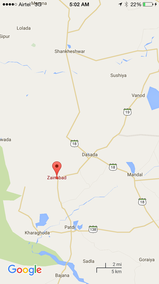 My bus dropped me at the little intersection of Dasada, where I relished in the opportunity to wait for my pick-up surrounded by goats, cows, jharu-sweepers and locals who stared at me in wonder. When the desert safari jeep appeared, I cringed at the sight of such a “tourist” vehicle. A short drive later however, I was dropped at Desert Coursers, and was immediately impressed by the sustainably designed round huts and beautiful lounge area made of cow dung, all adorned with colorful textiles and beautiful local flair. I happily filled my water bottle, excited to see the filtered water dispenser I dream of seeing at accommodations around the country (but rarely ever do!) One of my travel highlights has always been meeting an incredible array of people from around the globe – particularly those who are passionate, concerned, engaged and active. A full dose of chai gave me enough of a wake-up to be enthralled by great breakfast conversation with Stella and Alan Seker (and their friends Steve and Pete,) all proudly hailing from England and contagious with love for Zainabad, a pretty small dot on the map (keep zooming in on the gps and you’ll find it!) 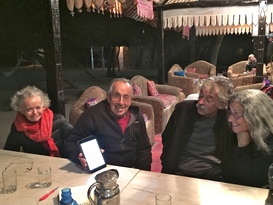 Here at Desert Coursers for the 6th time, Stella and Alan are spending much of their India visit at the Smt. Zubedabegam High School secondary school, one of the many schools built by Kuvar Shri Dhanraj Malik (of Desert Coursers) after the destructive earthquake of 2001. They are facilitating the second “This Is My Zainabad” book, a stunning catalog of photographs taken by local fourteen-year-old children using cameras for the first time in their lives, capturing Zainabad as they know it. Recognizing that old ways of village life are quickly disappearing, Stella and Alan hatched the idea for this photo and mapping project as a way for the students to create a visual record for their future children and grandchildren, showing how families have lived and worked in Zainabad for generations. With seven villages spanning approximately 80 square kilometers in the Kathiawar peninsula, farming and salt manufacturing are the primary sources of income (mining 100kg of salt will earn a family approximately 21 whopping rupees.) And wow, these young documentarians have run with it! When I saw the 2015 photo book, I was blown away - both by the quality of the photographs and the students’ impressive eye for the beauty of their daily lives. The boys and girls who volunteer for the project are given a simple lesson by Stella and Alan on how to use a basic digital camera. They then pick a particular aspect of Zainabad life to map and record. With passion, love and talent, Stella and Alan compile the colorful photos and maps created by the students into a beautifully bound book. The 2015 edition was divided into chapters for home, crops, food, carrying, professions, decoration and design, family, salt, and one capturing the photographers themselves. You won’t find this book on your local bookstore’s shelves (yes, many still exist!) nor will you easily find Stella or Alan’s names in any of the credits. A copy is provided to each child’s family and that is its primary purpose. What a joy to sit around the beautiful cow dung outdoor lounge area at Desert Coursers, sharing photos of blue bulls, flamingos and the once nearly extinct Wild Ass, hearing Stella’s and Alan’s stories of working with the students, flipping the pages of the gorgeous book and feeling their passion for sticking around in one place and getting to truly know the circumstances and issues of local life. Stella, Alan, Pete (funded the book) and Steve (their original connection to Desert Coursers) have a beautiful relationship with Dhanraj’s family and I’m grateful to them for giving me the opportunity to get to know three generations of this clan, so committed to the environment and to the education and well being of the local community. From gear talk (they travel with their own compact Japanese made titanium French-press and cups) to a steady flow of book and film suggestions, travel stories and overall positive energy, my time at Desert Coursers was truly enriched by the beautiful community vibe cultivated by Stella, Alan and the whole gang.
Founded by Shri Mohammed Shabbir Malik in 1984, Desert Coursers is one of the first “eco-travel” accommodations I’ve seen in India that has truly lived up to that title. The prime season for touring the area is January/February but I think anytime is ideal for getting to know a small community like Zainabad. Check out my other posts featuring the "salt people" and the community celebration we participated in. Five months into my amazing India travel experience, made possible by India Someday’s absolutely brilliant ‘You Wander We Pay’ contest, I bear the good news that I’m alive and well, perhaps even glowing, as I dream about where to venture next in this country of chaos and charm. Probably not what you would expect to read if you, like many others I know, have been too daunted to make your way to India, deterred by the countless blogs which warn women endlessly about the dirt, disorder and demeaning behavior of the ‘terrible male species.’ Well, here are six thoughts I think you should keep in mind if heading this way. And fear not, they are not designed to scare the chapatti out of you! 1) It’s pretty damn amazing here! Mind the media! All too often, it’s the gloom and doom of life that’s presented to us in our media, instilling fear and emphasizing negativity. Keep that in mind! I’m not suggesting bad things don’t happen – they surely do, all over the world. And huge kudos to those who share their experiences and raise critical awareness of gender based violence of any sort. So I say yes, read it all! Hear the important voices of survivors and fellow travelers, increasing awareness and sharing safety tips. There is lots of good advice out there. Just beware! It’s not the full story! There are thousands of us women who are having stellar, incident-free expeditions through India, immersing in the culture and commotion, day and night, in cities and villages, with women and men – and we are more than safe, we’re having the time of our lives! 2)You will be stared at – You are fascinating! Whether you’re on the Metro platform in Delhi or walking through a small village in Uttarakhand, you WILL be stared at. You can count on it. All the moreso if you have very fair skin or blonde curly hair! I’ve had people literally come stand a foot away from me, looking me up and down, even sneaking selfie shots with me, as if I wouldn’t notice. Many women travelers are horrified by this and have told me they feel like sexual objects. While I can empathize, knowing we carry with us our personal and shared histories as women, I personally feel more like an object of cultural curiosity and am not at all offended. Isn’t that a big part of why we’re here too?! One of my favorite parts of traveling in India is the amazing parade of people. I could watch and stare all day! So yes, I do feel eyes on me, but I feel more like a walking museum of western life than a sexual object. I can feel their fascination with my white skin, my freckles, my smile, my jewelry, my clothes, my bag, my shoes. I feel them wondering about who I am, what I do, how I think, not just what I look like naked. And trust me, I do know that feeling of being objectified – I just happen to feel it much more on the streets of New York City than here in India. Of course, as with anywhere, there will be some obnoxious souls you might encounter (Indian men will often be the first to warn you about them), but after 5 months of some pretty intense travel through cities and villages, using public transportation, immersing pretty deeply in local life, and following my gut, I’m happy to say that I don’t think that’s the norm. Some men in fact, might not even look at you at all, declining eye contact even while you’re in conversation. 3) Positive Energy is Palpable! Being present. Being open. I’ve been blown away by the positive energy here in India. Perhaps it’s one of my favorite parts of this country. I’ve traveled to many places around the world and never have I felt so much positivity. From the breathtaking natural environments of wide open deserts (Jaisalmer, Rann of Kutch), to the stunning mountains of Uttarakhand and Himachal Pradesh, the powerful rivers, the glorious beaches, the endless farmland, and even the chaotic streets filled with people and cows. The beauty of the land coupled by the brilliant colors of clothing and other textiles can at times even feel over-stimulating and nourishing for the eyes and soul! And then there’s the people – for whom the answer to any question is “yes, possible!” Take it in! Breathe it! Be present and live in the moment! Savor it! Feel its healing power! Let your guard down! Put those fear-mongering blogs in the back of your mind – and get to know the locals, even the men! Many travelers come to India and spend their time only seeing sites and enjoying the comforts of their accommodations and fellow travelers but being open to the people and culture will truly enrich your experience. It will also get you the directions and guidance you need, sometimes without even asking (the majority of people simply want to connect with you and help – not get in your pants!) The eye contact to be made, with women and men alike, especially while circling the white marble floors of the Golden Temple grounds, is unlike anything I’ve ever experienced. Even while on buses or walking the streets, connecting eyes and exchanging genuine smiles (and perhaps a head bobble too) is powerfully beautiful – and harmless! The majority of people, women and men, are sincerely interested in you culturally, offering you chai because of their Indian hospitality and to interact with you, as a human. Let your guard down (to whatever extent feels comfy and safe) and be as open as you can. I for one have found myself eating the most delicious meals, experiencing incredible wildlife and even dressing in full traditional Kutch exquisite handmade clothing – all because of my openness. Embracing the positivity, and moving the fear factor to the backseat (still need the info to inform your gut) will surely offer you a truly memorable India experience. 4) Strength in Numbers! No, I don’t mean its better to travel with a crowd, though at times, it sure is fun! I mean there are TONS of us out here. Every week, I’m newly inspired and empowered by the caliber of solo women travelers I meet. And not just westerners. To many Indians’ surprise, I regularly meet awesome Indian women who have quit their conventional jobs, donned their backpacks and are out exploring their incredible country, many of them blogging about it too. Many others are venturing out for long weekends and shorter trips, plotting their grand plans for longer-term adventures. We draw strength and passion from each other. We women are oozing with cultural curiosity, passion for nature and desire for healing, self-growth and connection, both for ourselves and others. Despite our masses, many will still be uber impressed by how brave you are (little do they know how much easier it often is to travel solo) and you will still frequently be asked if you are single, if you have kids and why not! Roll with the questions, as you like, having fun and embracing the opportunity for dialogue, even if it feels better to white-lie your answers. All the more interesting if you connect with local women and women’s organizations, bearing witness to their experiences too. One of my favorite moments was chitchatting about periods with the 14 and 19-year-old sisters from Dharamkot whose home I stay in. They loved my diva cup (definitely something I recommend for all menstruating travelers!) Such an amazing collection of women I feel honored to now know and learn from (and with). From a 19-year-old German, navigating her way through Rajasthan to the Indian woman who left her marriage and is seeking my travel suggestions to the Brit in her 70s covering more of the unbeaten path than any other I’ve met. An incredible sisterhood – inspiring, empowering and making change! 5) Being your true self! The more you travel and the more you live, the more you know what makes you tick – what inspires you, challenges you, nourishes you, strengthens you, brings you the most fun and the list could go on. Go after those things and go at the pace that feels right for you, even if it means straying from the path that you’ve read about, think you’re ‘supposed to do’ or see others doing. This has landed me in the most amazing local and nature scenes, connecting with people with shared values and leading me from one great opportunity to the next. Remember that there are no wrong turns – if you miss seeing a palace, it’s probably because you had an eye-opening conversation or were in a beautiful park. Maybe you were even in your room doing nothing (ha, that’s never really possible – maybe you really needed that extra sleep or to process your thoughts before heading back out!) India is a thoroughly overstimulating place! Staying in one area and unfolding the many layers; moving on to experience another terrain, language, style and cuisine; or venturing to a meditation or yoga retreat– all will offer endless anthropological phenomenon. In India, when asked “why,” the answer is often “why not?” If you keep this philosophy in mind, following your instincts and true-self will be all the more fun. 6) Good decisions and following your gut (a few little tips) 5 incident-free months of amazing travel through India (not even Delhi Belly!) I realize I might indeed be blessed with some good fortune. I’ve also followed some decent advice for making wise decisions, even though it sometimes means sacrificing something my ‘true self’ (see above) would want to wear or do! Here are some of the tips I find most helpful. Have I mentioned the vibrant colors and amazing patterns of all the textiles and clothing? Well, dive in! Leave your spaghetti-strap tanks at home (in fact, leave everything at home and carry the lightest bag possible!) Hit the markets and shop for some colorful scarves and cotton kurtas(loose, long tunics worn by Indian women). The hardest part will be choosing! Or wear other clothing that keeps you covered. India is a pretty conservative country. Covering your shoulders and legs might make you a little hotter temperature-wise but you’re bound to feel much comfier in other ways. It will certainly help make the inevitable staring feel benign and a colorful kurta will earn you an extra smile or two. Enjoy the conversation! You’ll be asked over and over again about what country you’re from and often the convo can become much more substantive and interesting. Get into it, enjoy it – and as you should anywhere, have your clear set of boundaries. Be ready to ease yourself out of the conversation as soon as you get any sort of “icky” feeling. The stars can be incredible here. Nothing like stargazing in the countryside, where the dearth of electricity means little light pollution. Its not easy to hold me back from a good night walk, especially when my strong instincts don’t smell any danger, but I make that sacrifice, both in cities and in villages – I don’t do a lot of walking alone outside at night. Thankfully, there’s almost always something fun going on to watch, talk about, cook, eat or play inside! Local is often better. In big cities, I love taking the public transportation and to get between cities and states, the trains and buses are stellar. Look out for “all-women” cars on local trains, usually all the way at the front or back. Amazing to ride with so much fun color and energy, a packed car full of traditional women carrying things on their heads and contemporary women heading to a whole array of jobs. There are even special lines for women to purchase tickets and some cities now have a fleet of all-women rickshaws. For long train travel, I recommend either 2nd class AC or Sleeper Car, and in Sleeper, top bunk is best. Lots of stories out there of women who have been groped but I have yet to meet someone this has happened to. I love Sleeper Class because it’s always easy to connect with trusted Indian women, many traveling with their families. They will happily keep an eye on your bag when you go to the bathroom, and will certainly offer you some of the home cooked food they brought on their journey. Because lots of peddlers and other people can come in and out of the train car, being on the top bunk gives you a safe place for your bags and lets you take it all in from a distance. I LOVE these train rides. Overnight sleeper buses are pretty great too; though beware of the double sleeper. It is meant for two and unless you know who you’re sharing it with, it’s probably not a good idea! Again, upper level is more private but bottom level is definitely less bumpy! Bottom line ladies, as you would/should anywhere in the world, my best advice while traveling India is to be aware, use common sense, follow your gut and make sure to enjoy the fabulous people and positive energy of this blessed country!
Namaste! Thank you India Someday Thank you You Wander We Pay Thank you Incredible India This article originally appeared on India Someday. 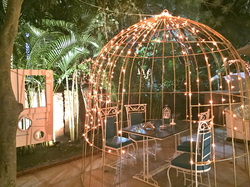 You may find yourself sitting in a cushy birdcage in the cleverly designed, ambient oasis of the Tamarind Hotel, but I hope you’re ready to eat way more than your average bird. Named for the beautiful passerine bird species found in Central and South America, the innovative eatery and entertainment spot Cotinga is the perfect accompaniment to Tamarind’s comfy rooms and luscious pool – yet, its worthy of its own visit (or many,) just for the delicious grub and inventive décor. I sadly missed it but apparently there’s a pretty stellar line-up of musical entertainment too! While Tamarind’s hotel staff was down-to-earth and highly attentive, one of my highlights was getting to meet Mom and learn about the whole family operation - how each name, design, entertainer and vibe for both the restaurant and hotel was curated by someone else in the family. From the comfortable couches to the soothing blue/green bird décor and shelves of books and games, I felt cozy and at home while at Cotinga, and that was before I saw the delectable drinks and meals being served. Ideal for family gatherings, large groups or dates, Cotinga offers a fun array of seating and a loungy billiards room as well. And if you feel overdressed, you can even check out the snazzy Hollywood –style shop in the corner, featuring cutting edge fashion straight out of Delhi, designed by the talented daughter of this family production. While Cotinga is an ideal spot for enjoying delicious shakes and drinks, reading the food menu itself could be a satisfying experience for a foodie - so come hungry! With as many locally grown ingredients as possible, the chef puts together beautiful platters of simple, mouthwatering meals, each potato seasoned to perfection and each slaw dripping with flavor. And why shouldn’t your food be pretty too? This fresh seafood special was practically smiling for the camera, its juices, flavors and tenderness almost as fun to look at as to eat. But don’t fill up…..desert is a must! Even for gluten-free folks. Not easy to find, especially while traveling around the world, the gluten free deserts on display were as tantalizing as the rest. I was lucky to try the chocolate cake and had a hard time believing there was something missing. The cheesecake sure wasn’t bad either! Bunking down at the Tamarind Hotel and splashing in the inviting blue pool puts you a quick bikeride away from the beach. With a super-cushy bed, great sheets and comfy pillows, my room was small and cozy, yet it felt incredibly light, open and airy thanks to the clever design of mirrors and lights playing in harmony. Tamarind also scored points for offering bathroom products a step above the chemical-full shampoos and conditioners of most hotels. Natural! Another clear sign of the personal family touches that have gone into all aspects of the hotel and restaurant’s design. My only regret at Tamarind and Cotinga was flying away too soon. Now to figure out a way back for nestling into the birdcage, lounging by the pool and nibbling my way through the menu.
So let me be the little birdie who told you…..Cotinga and Tamarind are two solid not-to-miss gems in Anjuna, Goa. Four months into my blessed adventure through this country of chaos and charm, India most certainly gets my two thumbs up! My head races each day with thousands of things I could ramble and blog about. The people. The systems. The history. The food. The nature. The social issues. My fellow travelers. The cultural traditions. Even this list does no justice to what cycles through my head. I’ve been so busy experiencing, observing, understanding, learning, processing and connecting that finding time to write, getting in front of a computer, and narrowing it down has been a crazy little challenge for me. It’s a new year though and I have lots to share – so I’ve decided to start with a POP! The best pop out there that is (or soda as some of you may call it.) Thums Up! Seriously, I’m a bit obsessed, almost feeling a physical need for a daily dose! While I might make a dozen bottles of plain homemade seltzer each week back in the US, very rarely will you find me sipping a Coke (never ever a Pepsi.) But here in India, the land where ‘everything is possible,’ what better way to toast the positivity each day than with the most delicious, perfectly spiced, specially fizzed Thums Up, the local pop (soda) which puts Coke and Pepsi to shame. Delectable pure sugar cane sweetness coupled by robust bubbles not only makes Thums Up the ultimate thirst quencher; it also drives home that powerful message of local being better. Yes, I know, I’ve seen those famous curly cursive Coca Cola letters atop the Thums Up bottle cap, but to me they just indicate there’s a story to be told. Rumor has it that in the 1970s, big corporations like Coca Cola were unwelcomed in India unless control was handed over to Indian subsidiaries so Coke said “chalo" (Hindi for ‘we’re outa here’) opening the door for the local company Parle to craft the famous, mouthwatering, widely-worshiped Thums Up. In the 90’s however, Coca Cola and other giant companies made their way back to this holy land, only to discover the unbeatable flavor of India’s new local pick-me-up.
And so, as the story often goes, the big guy bought the local guy, capitalizing on the homegrown formula’s legendary status. Thankfully (though likely driven by dollar signs) the brilliant, positive, local Thums Up name remains on the front of the bottle, tantalizing me each time I see it. Sadly, as the story also often goes, the cola wars continue and our beloved Thums Up is sometimes nowhere to be found. A true travesty! No folks, a Pepsi just won’t cut it. So as this new year begins, I say Thums Up for all! Local is better. Even if local is 8000 miles from the big city I call home. Thank you Thums Up! Thank you real cane sugar instead of high fructose corn syrup! Thank you India! Namaste! 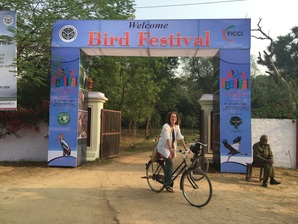 “Was it a lifer?” the thirteen year old asked me, his dark brown eyes wide open with excitement as he followed the bird’s graceful flight. “Hmm…a lifer?” I took some time to ponder what he might have meant before I responded. Too many years working in the criminal injustice system, my first guess had the bird caged up behind bars for decades, though I knew that couldn’t be the case in this nature-rich outdoor sanctuary. He went on to enthusiastically share that he himself had a few lifers on day one of India’s first ever Bird Festival which took place December 4-6, 2015 in Chambal, Uttar Pradesh. I’ve always thought of myself as a bird enthusiast. I’ve taken countless photos of puffed up cardinals and blue jays in the snowy Ramble of NYC Central Park; I love seeing the woodcocks in Jamaica Bay Wildlife preserve; and have even made it to Papua New Guinea where I excitedly sat in my dugout canoe, binoculars in hand, gazing in wonder at the magnificent feathered creatures. Participating in India’s first Bird Festival however, was an incredibly humbling experience for me, sharing binoculars and scopes with some of the top ornithologists from around the globe and getting a sense of just how deep and layered the world of bird watching can be. Organized by Nikhil Devasar, avid bird watcher and Consultant for the Uttar Pradesh Eco- Tourism Department, the 1st ever Bird Festival brought together over 100 birding enthusiasts, from India, Kenya, Sweden, England, Nepal, USA and other countries around the globe. Young and old, newbies and veterans, attendees swapped sighting stories and compared gear, always appearing calm and composed, yet with palpable passion for birds and all kinds of wildlife. Chief Minister of Uttar Pradesh, Shri Akhilesh Yadav, inaugurated the event and proudly welcomed the group of distinguished bird watchers to the National Chambal Wildlife Sanctuary, just one of a dozen sanctuaries in the “bird circuit” of Uttar Pradesh being promoted as part of the State’s impressive eco-tourism mission. With lodges, secure transport and a cadre of professional conservators and wildlife guides, there is increasingly convenient access to protected areas for viewing some of India’s vibrant bird life. The Ganges, Yamuna, Rapti and Gandak rivers coupled by a range of lakes and other wetlands make Uttar Pradesh the ideal stomping grounds for both resident and migratory birds coming from as far as Europe, Tibet, Siberia and China. Chambal in particular, is home to the Gharial, Gangetic Dolphin and Indian Skimmer, not to mention it being the residential home of the stunning Sarus Crane. Each morning the festival offered three options for bird viewing, including a boat safari in the Chambal River. While I thought the morning fog made for a dreamlike setting, I was quickly reminded of our bird watching purpose and joined in the excitement as the skies cleared and many of us relished in the opportunity to see “lifers.” I’ve since learned this refers to first-ever sightings of a particular bird species! All geared up with giant lenses, high-tech tripods, cutting-edge scopes and fancy binoculars strapped onto their bodies, the festival family was a joy to be around, everyone generously sharing both knowledge and equipment. As our white tourist cars pulled up to a site, village children and adults alike joined us in curiosity. I loved seeing the most committed of bird-watchers, eager to spot specific species, offering their binoculars and setting up their scopes for the villagers to catch a glimpse of something special. What a joy to gaze out at the spotted owlet with a line of 10 excited boys, hatchets in their hands, ready for the days’ work, savoring in the opportunity to see their land through a whole different lens. Kudos to Nikhil for inviting such an impressive caliber of birdwatchers, so open to sharing and exposing others to their passion. And such experts!! I would look out and barely see a speck in the air and they could name and provide all of the details of the far-off bird in the distance. Forget about “lifers,” there was a whole language of birding I could barely understand but was thrilled to learn and be around. Each afternoon, the schedule was jam-packed with lectures from expert birders including Nigel Redman, Per Alstrom, Jim Lawrence and Tim Appleton (to name a few) sharing their deep knowledge of particular species, from chats to owlets. Booths were set up to showcase and raise awareness of critical conservation efforts and to promote eco-tourism around the state. Newly designed literature and teaching tools for children were distributed – and it was a pure delight to see huge groups of uniformed students attending the festival’s workshops. 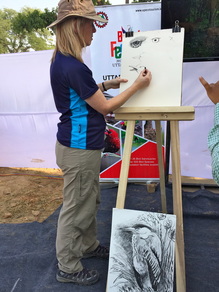 We also had the great opportunity to watch some uber-talented bird artists in action. Jackie Garner offered fabulous workshops on drawings birds while the paintings of Pratim Das were beautifully displayed and sold across the aisle from some of the most stunning bird photography I’ve seen. A great painting doesn’t count as a “lifer” though so during some free afternoon hours, I simply enjoyed the unofficial bird watching opportunities in the picturesque preserve and farm fields. I may have even snuck out to the vibrant streets and villages nearby (I’m admittedly still a bit hooked on the incredible people (and cow and goat) watching in India!) One of the highlights for me was watching expert bird ringer, Dr. Balachandran of the Bombay Natural History Society. With a brilliant smile, he would hold up a specific bird that had been caught in the light netting, share some information about it and offer beautiful close-up views as the bird was measured, weighed and ringed. Each time, someone new in the group was given the honor of releasing it back to the wild. An enchanting tent city was set up at the Chambal Safari Lodge where we bird lovers got to camp (or “glamp”) in style, with evening entertainment and mouth-watering Indian meals serving as a perfect setting for chatting about “lifers” and all else bird-related. At night we meandered the fields and scoped the trees for civets, small nocturnal mammals native to tropical forests of Asia and Africa. I chuckled as the topic of raccoons arose; my Indian friends eagerly awaiting an opportunity to one day see the furry creatures so common to our parks and back yards in the US. Together we gazed at the smiling moon and shining stars, sharing stories of the constellations and singing songs around a glowing bonfire. What an incredible sense of community these little (actually some of those vultures were quite large) winged beings create. We were a beautifully diverse group and I loved the intergenerationality. The festival was not only an incredible opportunity for bird watchers to see India and add to their list of “lifers,” it showcased Uttar Pradesh’s rich natural resources as a vehicle for bringing the international bird watching community together. Dozens of folks had been seeing each others’ photos and even corresponding with one another for years, the festival offering them the first opportunity to meet face to face. In exciting news, December 2 -4, 2016 was announced for the 2nd Annual Bird Festival, so mark your calendars if you’re eager to be birdy nerdy in India! I for one, have a lot of learning and purchasing to do beforehand. When asked where my binoculars were during the festival, my answer unfortunately was “in the future.” The very near future….along with my “lifer” list.
Thank you Uttar Pradesh. Thank you Nikhil. Thank you Birds. Thank you fabulous bird watching friends. Namaste Uttarakhand - Among the World's Best Travel Destinations. A Full Dose of Nature and Spirituality.11/13/2015 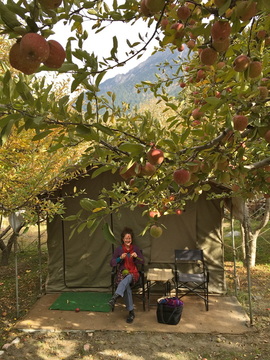 There I sat, outside my lavish tent at the Harsil camp, fallen red apples at my feet, the brilliant blue sky peeking through the branches of the fairytale-like fruit trees, the picturesque Himalayan mountains in the distance, with their snow capped tops and enchanting pines, the rushing sound of the beautiful blue/green Ganges filling my ears and glistening from the shining sun, the aromas of our home cooked meal made from local ingredients filling the air. It was magical. Uttarakhand was hosting it’s first ever travel writers’ tour and I count myself among the luckiest writers of the world to have been included. I got to taste the beautiful fruit of this blessed state, both the abundant delicious apples themselves and an enticing sampling of the pervasive holiness, not only at the many sacred pilgrimage sites but on the serpentine mountain roads we traveled for hours on end, destinations in their own right. I was totally wooed. Our nature-rich introduction to holy Uttarakhand had me hooked. I am already plotting a return visit, and definitely for a longer stretch of time! Our group traveled the Garhwal region, beginning with a pampered stay at the Aloha on the Ganges in Rishikesh where my glorious dip in the infinity pool’s blue waters made me feel like I was swimming in the powerful Ganges. Our next few nights were spent camping (or shall we say glamping) at Chardham Camps in Harsil and Barkot. All three sites are premier properties of the Leisure Hotels chain, set in the most splendid of settings and offering highly luxurious yet extremely tasteful accommodations. Rich in Uttarakhand pride, each setting offered delectable home-cooked meals, one more mouthwatering than the next, all prepared with local ingredients. I particularly loved the bindi, daal makhani, freshly made papad and local tasty desserts. While the chill of the Himalayan hills had us donning our most colorful layers of clothing, what a delight it was to experience incredible Uttarakhand warmth. From hand-delivered hot water bottles for keeping us toasty in our camping beds to the unending warmth and kindness offered by just about every individual we encountered, Uttarakhand welcomes visitors with a full dose of heart and soul. DEV BHOOMI - LAND OF THE GODS It comes as no surprise that Uttarakhand is referred to as Dev Bhoomi, Land of the Gods. There are rivers, lakes, mountains and temples deemed among the most sacred by Hindu followers, millions who make yatra (pilgrimages) to these holy sites each year. While Uttarakhand is the ultimate outdoor adventure playground for some, it is also the quintessential classroom for learning Hindu culture and religion, many of its most epic stories set in the mystical rivers, hills and valleys. This omnipresent sense of holiness is felt deeply not only at Uttarakhand’s vibrant religious sites but also while simply driving through the sacred terrain where breathtaking nature and awe-inspiring characters abound. HOLINESS OF TOWNS AND VILLAGES Walking from our camp at Harsil, we passed wondrous apple orchards and fields robust with holy tulsi and cannabis, the brilliant blue/green flowing Ganges always in our sight, working in concert with the fluffy clouds, cool breeze, shining sun and snow capped mountains to envelop us in an inexplicable blanket of natural marvel. What could feel holier! We were on our way to the temple in Mukhba, the winter home of the goddess Ganga. As we approached the village from a distance, I was already in awe of the village scene, the beautiful mountainside dotted with traditional wooden homes, wandering cows, beautiful women hunched over carrying rope-tied bundles of wood on their backs, others forming a stunning parade while merely walking in their colorful daily clothes, rainbows of laundry hung to dry, children of all ages roaming the narrow paths, hammocks dangling from houses. As we entered the village, trigger-happy with our cameras, we politely asked the women and men we encountered if they minded if we took photos. In sharp contrast to village experiences I’ve had in other parts of India, their warm engaging smiles coupled by their Indian head nod (which I’m slowly getting better at interpreting,) conveyed a beautiful warm welcome to us. We were soon asked if we were hungry and when we finally pulled ourselves away from the village, we were tossed a delicious assortment of homegrown apples for our journey. The detailed woodcarvings on the homes were exquisite, enhanced charmingly by the beauty of the people inside and their natural, sustainable way of living in concert with the land, in faith and as a community. We of course visited the temple and received bountiful blessings. For me, the sense of holiness permeated well beyond the temple walls, it could be felt in the air and throughout the whole village. As special and unforgettable as our time in Mukhba was, it was incredible to encounter the same warm reception in all of the towns and villages we stopped. MAGICAL DRIVES Heavenly. That is the first word that came to mind each time we hit the roads. It couldn’t have felt more like a dream, driving through majestic mountains, many of them snow-capped, gazing down at the winding menthol-blue river down below, the Yamunotri, Ganges, or Bhaghirathi depending on location. Each day we drove we saw gorgeous rock formations, streaming waterfalls (some as tall as the mountains), countless varieties of pines, trees whose colored leaves waved an autumn greeting and beautiful homes and villages scattered in the valleys and steep mountainsides, many surrounded by stunning layers of terraced farmland. So much green growth and vitality, the array almost baffling, from fruit trees to towering pines to succulent cacti and all the grains growing on those terraced mountains. I was in awe, in bliss, in heaven – totally overwhelmed by the magnificence. Even driving in a tourist van, I could feel I was in a holy place. I dreamed of returning with botanists, geologists and holistic medicine practitioners. Not only is Uttarakhand a giant classroom for learning about Hindu culture and religion, it is most certainly one of the most fun and beautiful places to study our natural environemnt as well. Glorious as the views might be, these rollercoaster roads offer the ride of a lifetime, thrilling and terrifying at the same time. A caveat to those who are prone to motion sickness (thankfully I was fine,) the constant twists, turns and giant bumps will have you thanking Ganga you remembered to take those meds. Nothing like a speeding bus, truck or motorbike coming down the single lane in the opposite direction as you wind around serious curves on the shoulderless road, sheer drops leading deep into the valley. But l must say, I was utterly impressed at how efficiently the roads flowed; the prowess of drivers was impressive beyond belief. Despite the crazy bumps and endless curves, Uttarakhand seems to be doing a great job keeping the roads safe. I loved seeing the yellow, red and white striped traffic barriers dotting the sides of the roads, and the landslide traffic we were stuck in was resolved quite quickly, though it looked like it would take hours. Granted, we experienced another landslide in the same exact spot a few days later when driving in the opposite direction. Perhaps Mother Nature is sending us a message as we tread heavily upon her pathways. What a beautiful sense of community that developed as people exited their cars to spectate the cleanup and connect with fellow travelers of the roads. Another highlight of the drives for me was passing through dozens of small little towns, each with the same typical shops selling biscuits and vertical strips of bags of chips, colorful kultas, an array of produce, bangles and jahrus (grass brooms). Of course little towns abound in this huge country, but something felt special about the ones in the Uttarhakand mountains. Each was bustling with women, men and children of all ages, all exchanging smiles upon eye contact. I loved the colorful recycled plastic bags dangling in the stores’ entryways, strong sheets of unused plastic labels designed into a heavy-duty tote and delivering an equally strong message about putting waste to good use. In almost every town there was an assortment of hand-knitted sweaters for sale and a handful of women sitting together knitting. During one quick stop, 100 rupees bought me two balls of yarn, a set of needles and an awesome way to connect with local women. Each time we drove slowly past my fellow knitters, I held my new project up and we would share a fun chuckle of international knitting camaraderie. DEV BHOOMI - LAND OF GODS, LAND OF BLESSINGS! Never before has my forehead been so consistently red and yellow, the sign of blessing after blessing. Home to some of Hindu’s most holy sites, particularly the Chardham Yatra comprised of Gangotri, Yamunotri, Kedarnath and Badrinath, Uttarakhand is a major pilgrim destination, consistently welcoming a steady flow of Indian tourists, full of positive, spirited energy. Fortunately, October is the off-season but quite honestly, I can’t imagine there ever being a more beautiful time for visiting one story-rich temple after the next, each in magnificent settings. I loved standing on the Lakshman Jhula bridge in Rishikesh, staring out to the river, mountains and countless temples, knowing thousands of meditation and yoga students were busy stretching their bodies and minds in this city’s multitude of ashrams. We of course visited the renowned but now-defunct “Beatles’ Ashram,” where the band came to study Transcendental Meditation with Maharishi Mahesh Yogi and ending up writing 48 awesome songs. We had fun doing photo shoots in the newly (2012) graffiti’d meditation hall. Word has it the deserted ashram, covered in stellar spider webs, will soon be renovated by the government in a bid to promote ecotourism and will likely put yet another pilgrimage site on Uttarakhand’s tourist map. The evening aarti (prayer service) on the Rishikesh riverbank was enchanting, unmistakable devotion emanating from the young boys’ closed eyes as they chanted. Though also full of tourists, in contrast to the magnificent nightly production of an aarti in Varanasi, this one felt down to earth and participatory. It was also nice to see some nearby walls devoted to publicizing Ganga clean-up efforts, highlighting global interfaith collaborations for this immense task. Visiting Gangotri, one of the four sacred sites of the Chardam Yatra and launch point for the frequented 18km trek to Gomuk, the legendary glacier and source for the mighty Ganges, was a significant highlight for me. We had the opportunity to meet with the highest priests and to learn about the rich history of Gangotri as a pilgrimage site but most importantly we participated in an unforgettable puja (prayer ceremony) at the waters’ edge, immersing ourselves in and tasting the holy blue waters of the sacred Ganges. The sun’s warmth, the sound of the rushing waters, the scent of incense in the mountain air, the holy hum of chanted mantras and the countless rituals of sprinkling waters and little spoonfuls of other holy elements on our heads and in our palms was a dreamlike multi-sensory experience unlike any other, tears filling the eyes of nearly everyone in our group. Fascinated by the rituals and traditions, I am thoroughly intrigued to learn more about these beautiful symbolisms. Ganges water dropped in our hands, we were to slurp four times and toss the fifth behind us. Sometimes we were to put it on our head. So much to learn and understand, but even without that knowledge, the feeling of being at one of the holiest of holy places was astounding, dozens of visitors sanctifying simultaneously in such a picturesque setting. GANGNANI HOT SPRING As a hot spring enthusiast, you can imagine my excitement to experience Gangnani, soaking in the fresh hot waters while staring out at the brilliant blue sky and majestic mountains. Surreal. Though it might not have the religious significance of other Uttarakhand sites, for this tourist, these geothermal healing natural wonders feel plenty holy. The only one in our group to soak, I made my way to the Parashar temple just above, the only visitor at the time to the small cave like shrine where I received my beautiful blessings. I’ve since learned that there are many more hot springs in the vast nature playground of Uttarakhand and am already plotting my next trip to soak in them. We visited several other holy sites, including Kashi Vishwaneth where women were celebrating Karva Chauth, a daylong festival where women fast and pray for the safety and long life of their husbands. They toted baskets covered with beautiful hand-crocheted covers and smiled radiantly as they saw us observing their practices. At Shiv Gufa, also referred to as Lord Shiva’s Cave, we once again marveled at the coupling of nature and religion as we climbed a thousand stone steps and shimmied our way through the stalagmites to see the natural rock formations shaped as Ganesh, Shiva and others, of course receiving yet another priestly blessing. Raditop, Kapnol Village, Lakamandal…the list could go on of the important and beautiful sites we visited. The list is even longer for the ones I hope to visit on my next dream trip through Uttarakhand. FUTURE OF UTTARAKHAND TOURISM
Uttarhakand undoubtedly has what it takes to put itself on a tourist’s map. Home to some of the world’s holiest sites, the most exquisite mountain landscapes, immense nature playgrounds and warm, charismatic people, I am surprised (and somewhat relieved) that it isn’t yet teeming with more non-pilgrim tourists, beyond the typical yoga hotspots like Rishikesh. I was quite thrilled to find Uttarakhand to be much cleaner than many other areas I’ve traveled in magnificent India, it’s villages and people unspoiled by imposing partying travelers and the reverence for its holy sites palpable. I personally consider Uttarakhand to be among the most magnificent places in the world and am ready to scream this from the hilltops, though only to the most spiritual, curious, respectful, nature loving, adventurous, eco-conscious, low-impact travelers. A huge part of what makes Uttarakhand such a remarkable destination is how pure it feels, a distinctive sensation of holiness radiating through the striking valleys and at each official holy site, augmented further by the captivating smiles and kindness of its people. How wonderful if the tourism industry could indeed flourish, enabling more of the world to be nourished by this tremendous goodness while also providing sources of income for local individuals and communities. How important however, for it to be done in a sustainable way, to preserve those amazing qualities and the pristine nature so worthy of showcasing. Until my next visit, Namaste Uttarakhand. Check out my Huffington Post article about waking up to the powerful sound of India's ubiquitous grass brooms.
Click here. Excited to see it's been picked up by Jodhpur Gazette, a Headline News site and others. Thank you interweb! Thank you India Someday! Thank you You Wander We Pay! Namaste! From divine desert dunes to sacred lakes and simple village life, I’ve been feeling the India pulse and loving it. My India Someday –You Wander We Pay itinerary has been chock full of varied landscapes and city scenes. I can’t lie though – sometimes the cacophony of the cities makes me lose my mind.
I was totally dreading my time in Delhi but ended up liking the big city! Many more thoughts to share but here are some of my initial thoughts written for the You Wander We Pay blog. Click here to read! 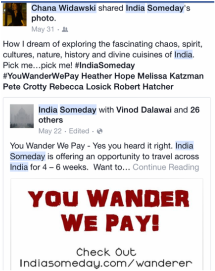 When my number one travel inspirer, Heather Hope sent me the email link for a contest called #YouWanderWePay, offering a free month of expense paid travel through India, I knew I had to jump on it. Itching for a shake-up of my crazy NYC life for quite some time, yet too busy doing things I love to make it happen, I thought “wow, you better manifest this Chana….it has your name on it – and is exactly what you need!” I did enough online sniffing to uncover a handful of favorable Trip Advisor reviews of the contest sponsor, India Someday, making me comfy enough to follow the instructions of writing a sentence about India and tagging 5 people on Facebook (if I had to tag 35, I probably wouldn’t have applied!) I followed up with an email to India Someday to express a bit more enthusiasm for the potential of this dreamy adventure. Ojas immediately got back to me and asked for some sample travel writings and photos. I certainly have no lack of rambles about my rambles, and of course have some pretty compelling photos too. I sent them off to Ojas, hopped on my bike to work and felt myself glowing as if I had already won. Once it got into my head, I was determined to make it happen… and never strayed from the possibility that I indeed could. “Spoiler Alert….Pack Your Bags….” read the email from Ojas, after a month of me devoting oodles of mental energy to making this dream come true. I scrolled through the site a couple of times to make sure I read correctly and forwarded it to some friends to see what they thought. I then dove into a much more intense web search to determine if this was actually legit (sorta felt like Ed McMahon came to my door and just told me I won the sweepstakes!) I turned up a nice bunch of reviews and decided to contact someone who mentioned India Someday in a Huffington Post article. She wrote back immediately, sharing passionately that her trip was amazing, I should definitely go and I should send her fondest regards to the team. Damn, this might ACTUALLY BE HAPENNING! Who would believe? A contest called You Wander We Pay! As if it literally had my name on it. We had our first Skype call and I got to meet most of the India Someday team. I had a great feeling about them, but to top it all off, at the end of the call, they mentioned they noticed we had a mutual friend on Facebook and asked if I was actually “friends” with Jeremy. Curious about how THEY knew him, I was blown away to learn that India Someday had handled Jeremy and Gail’s honeymoon in India. I of course immediately contacted them and received yet another glowing review. When I told Jeremy that I won a crazy contest through the agency, he said “oh, I sent a link for that contest to Heather.” What? Really? I’m often technology and social-media averse, but dang, it sure did work in my favor this time around. Thank you universe. Thank you Heather. Thank you Jeremy. Thank you India Someday Thank you YouWanderWePay. India, here I come! |
Chana WidawskiA social worker…..working socially, around the globe. Archives
August 2020
Categories
All
|
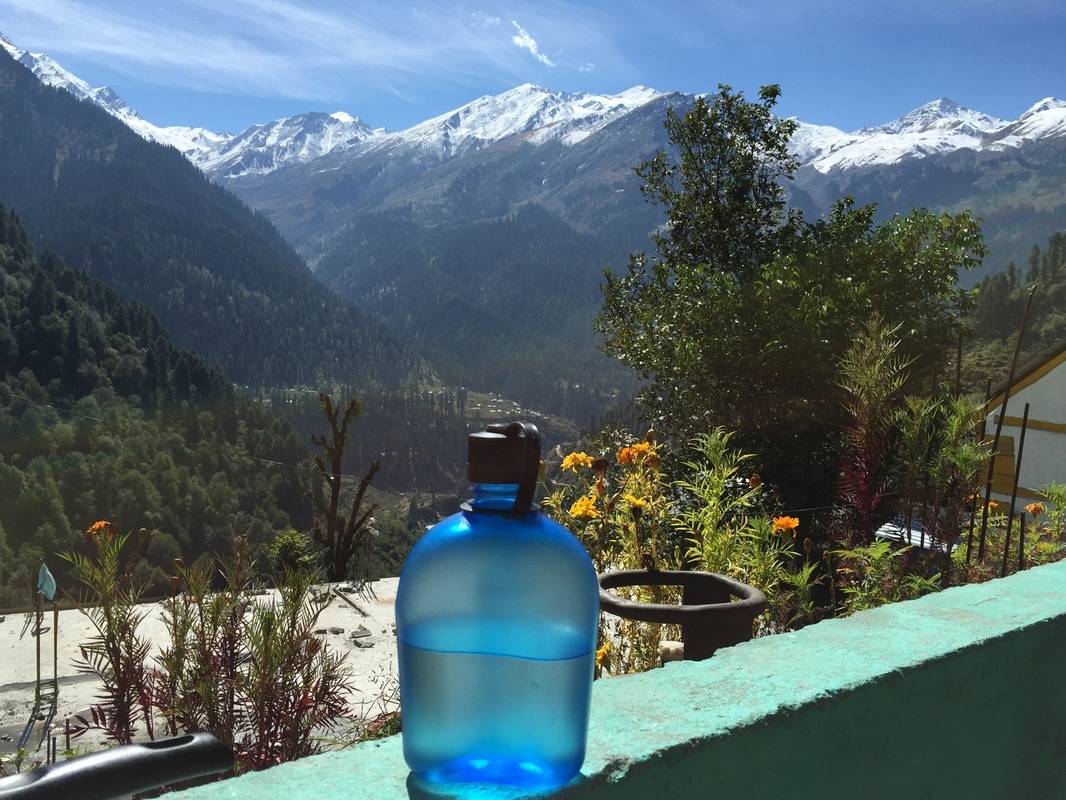
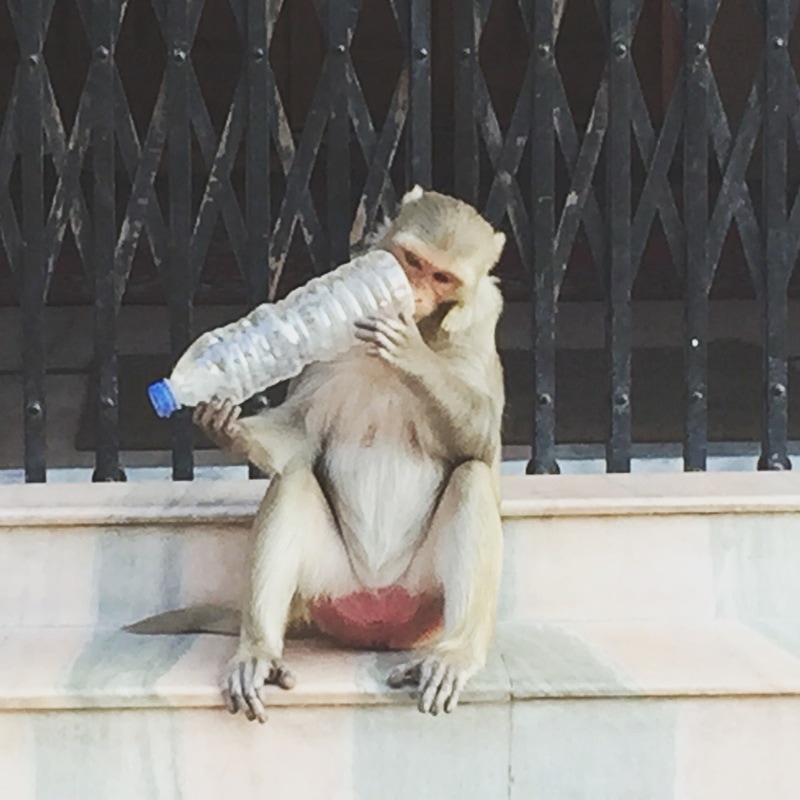
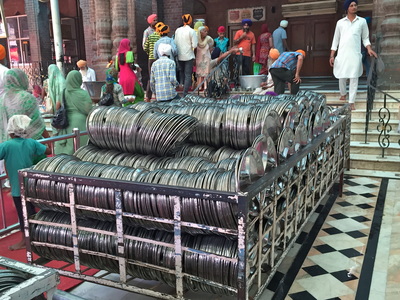
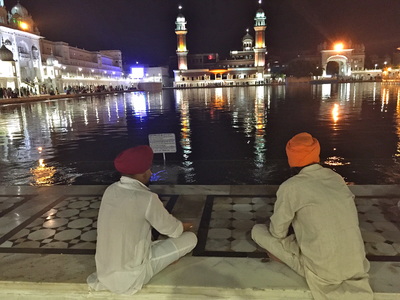
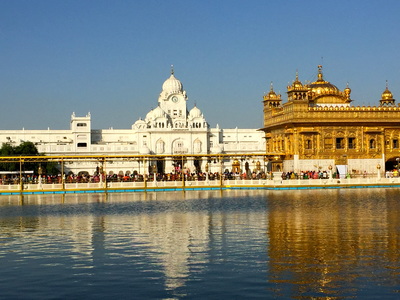
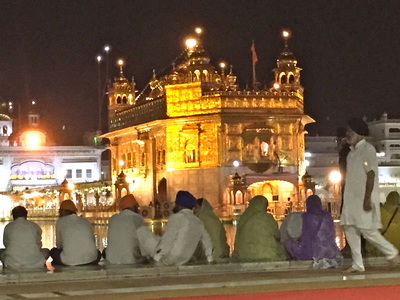
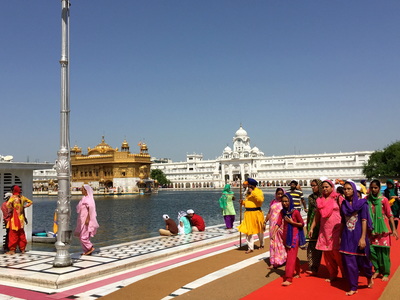
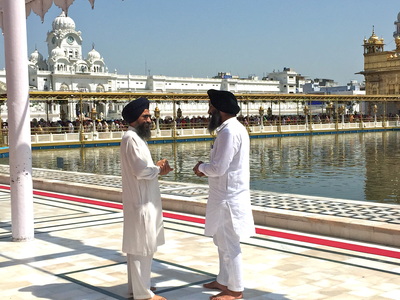
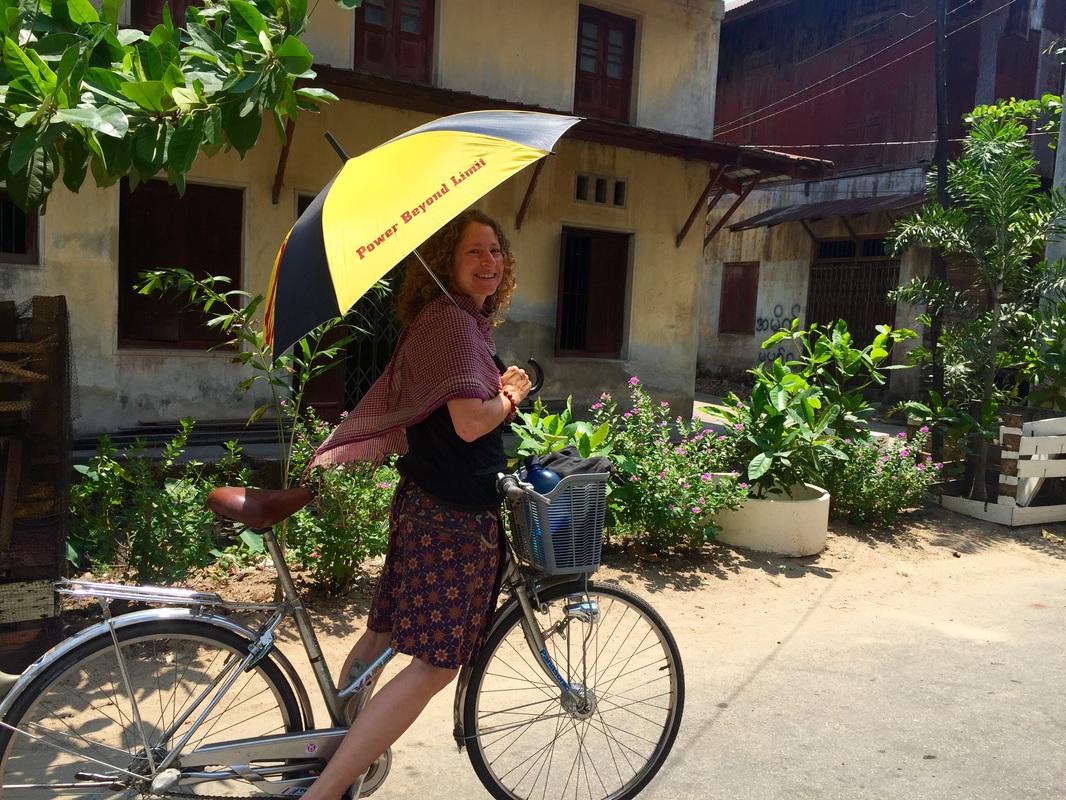
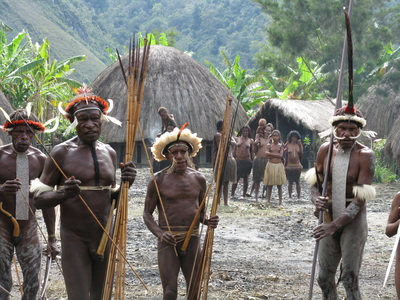
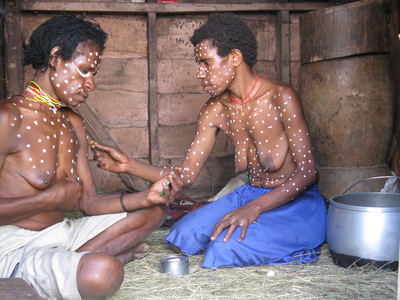
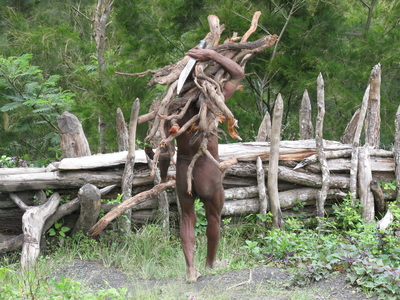
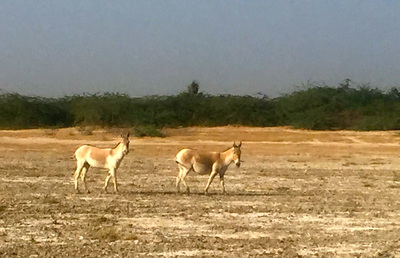
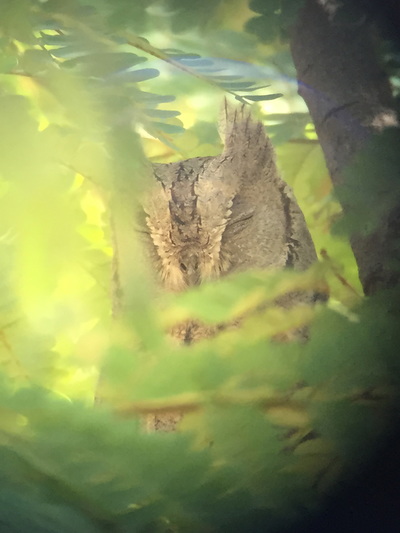
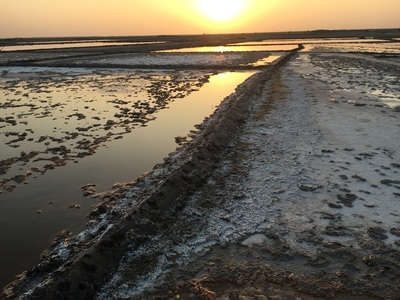
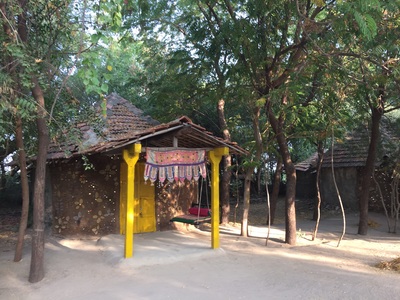
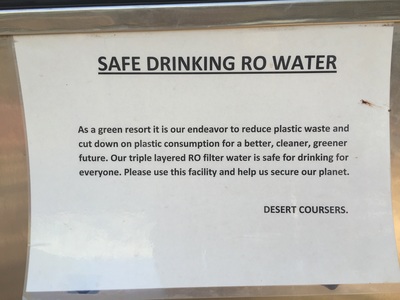
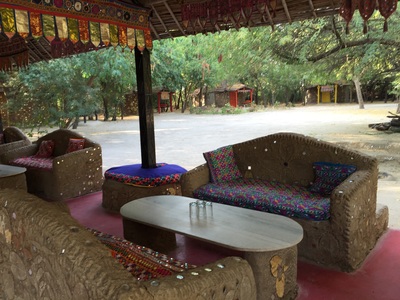
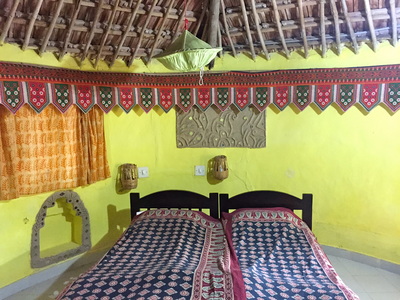

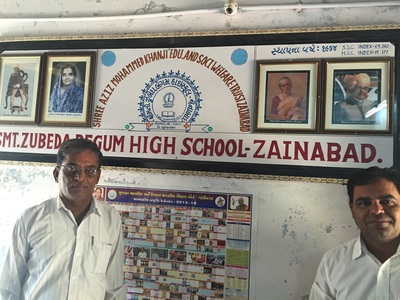
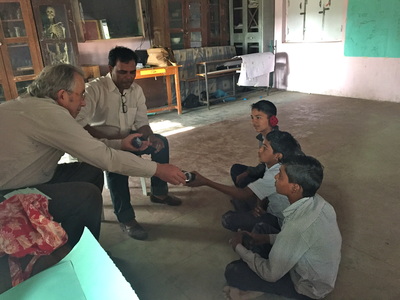
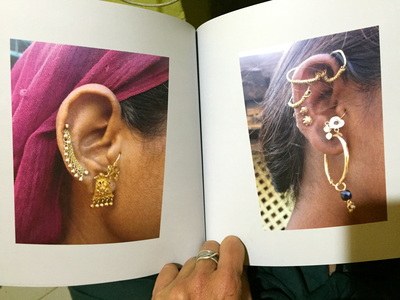
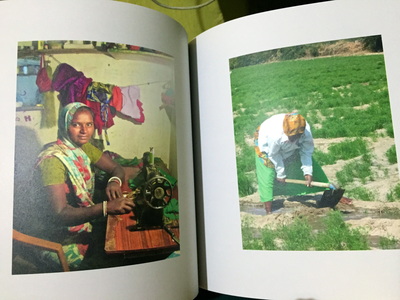
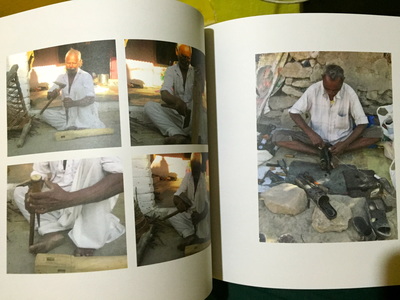
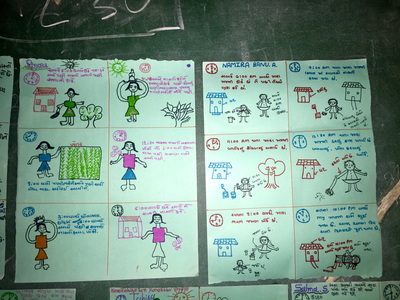
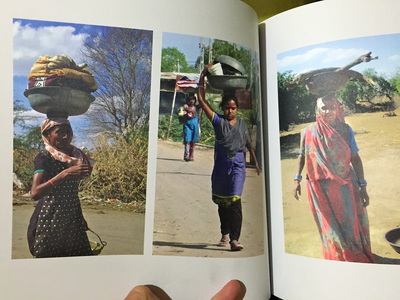
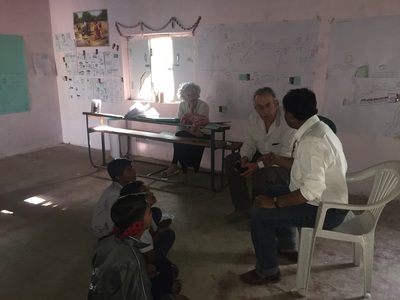
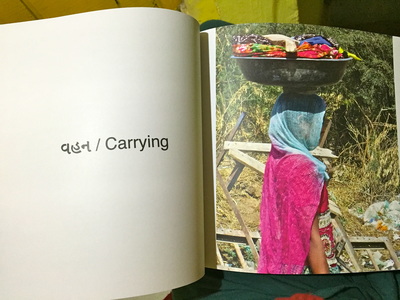
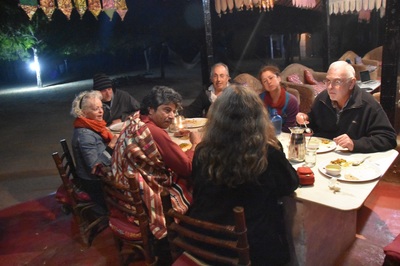
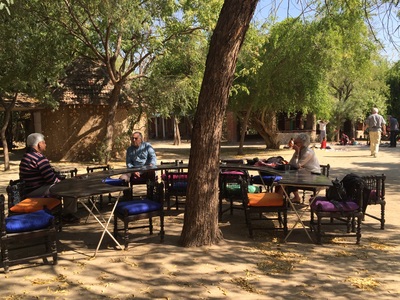

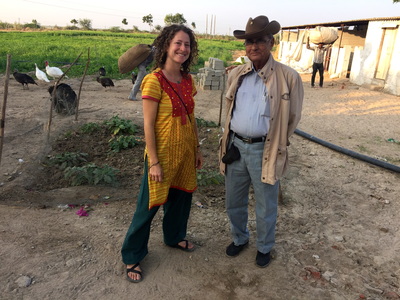
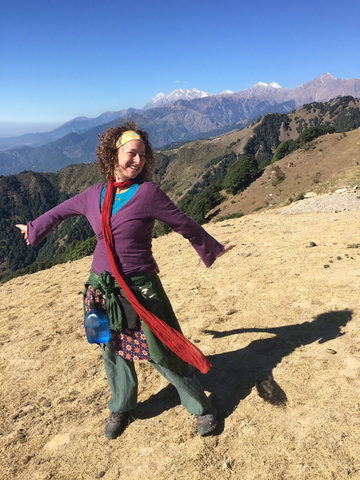
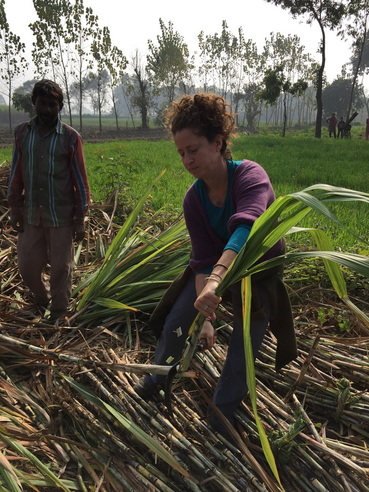
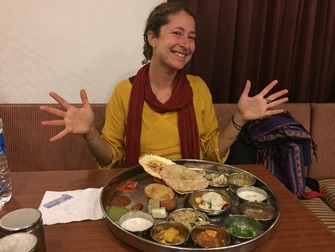
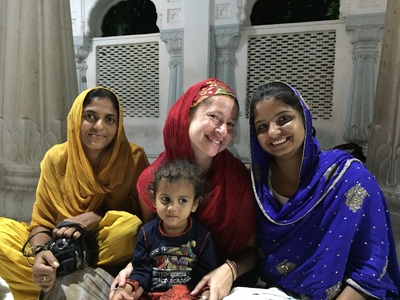
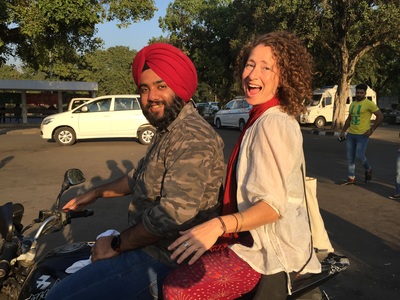
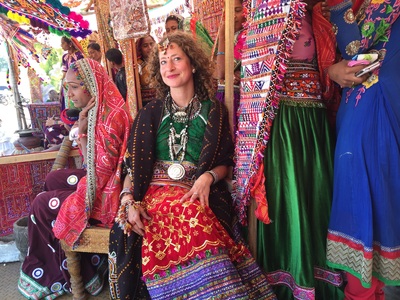
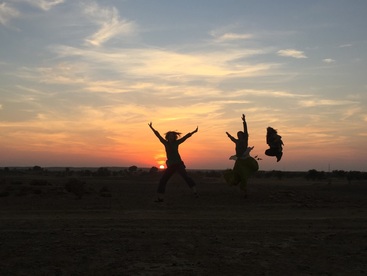
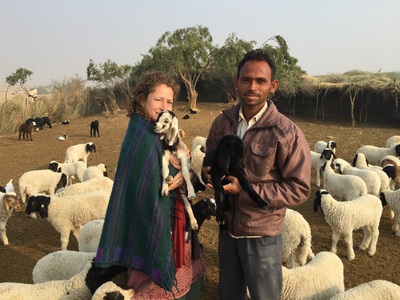
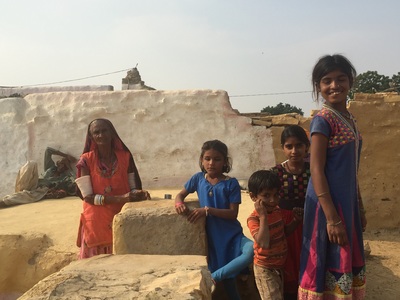
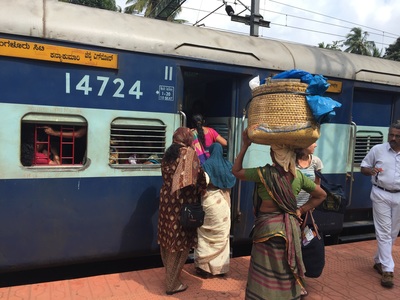
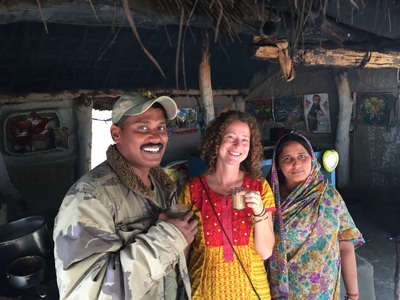

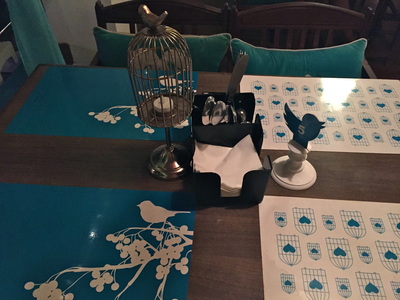
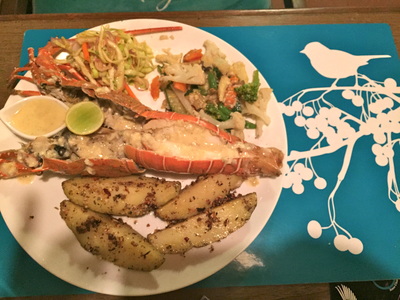
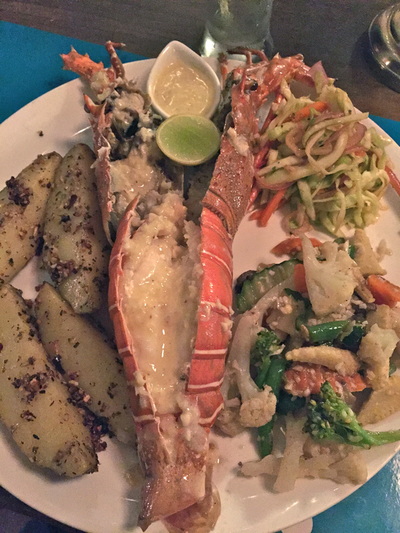
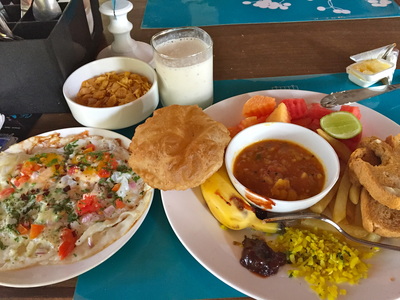
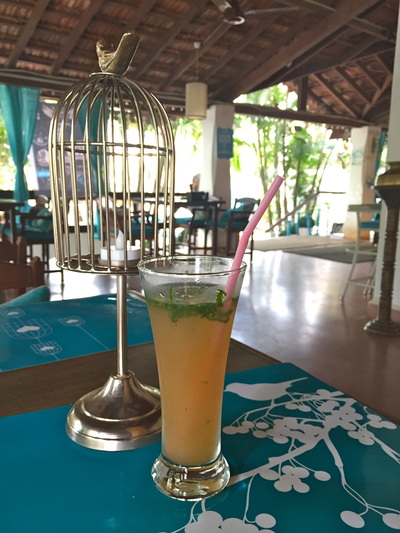
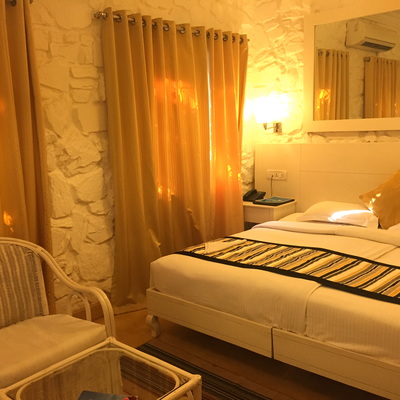

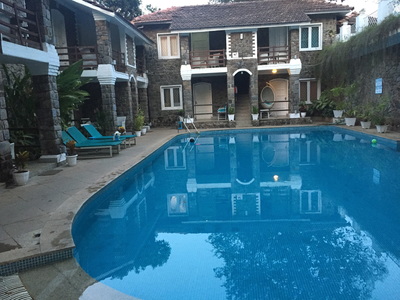
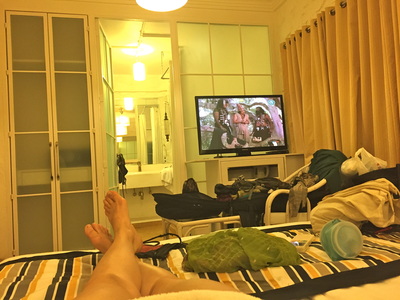
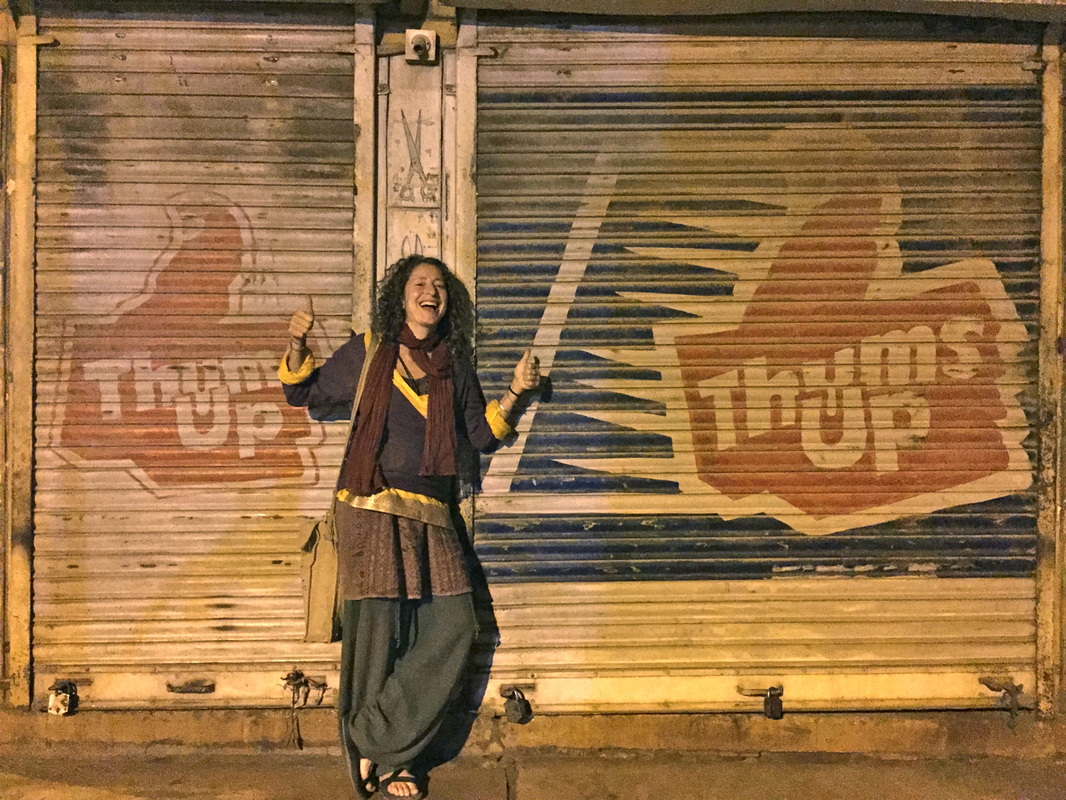
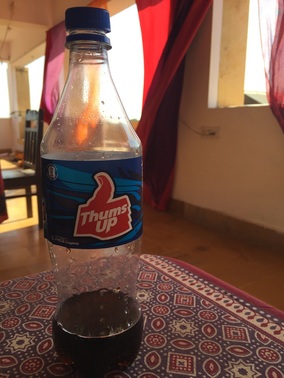
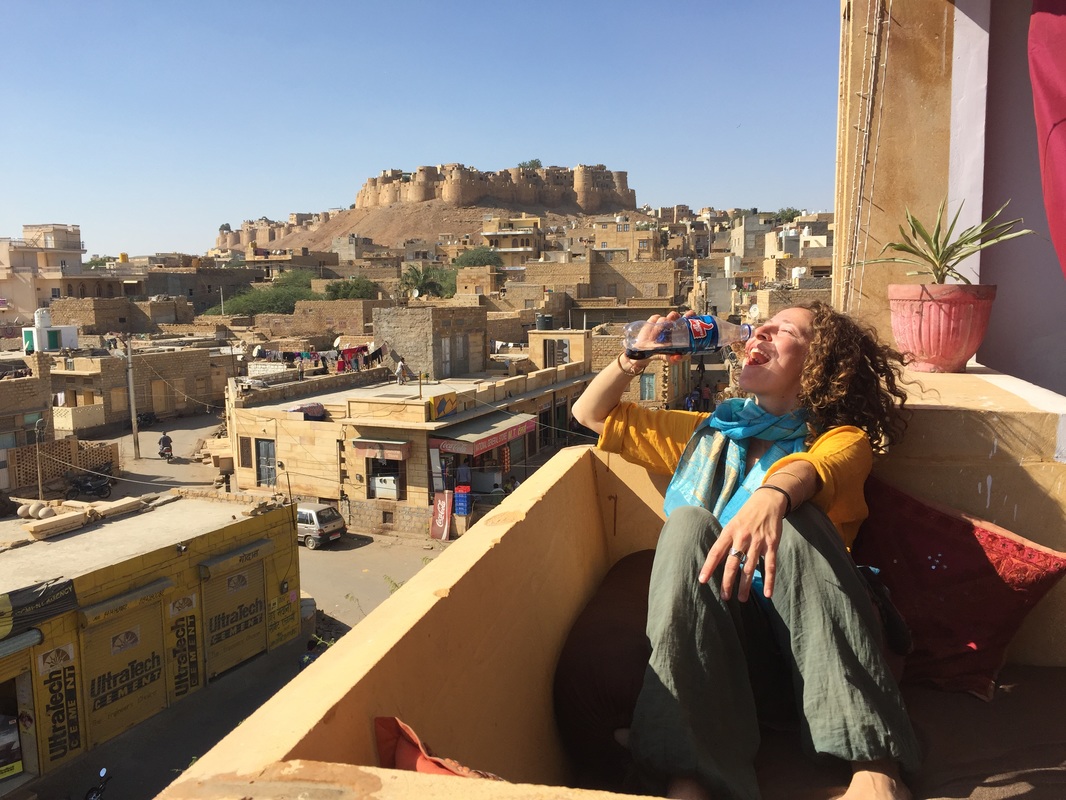
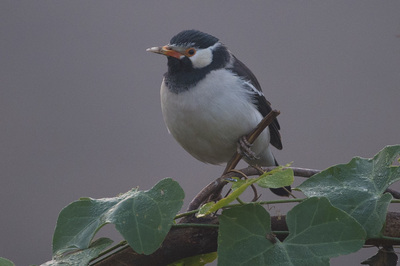
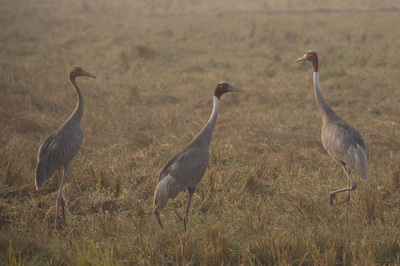
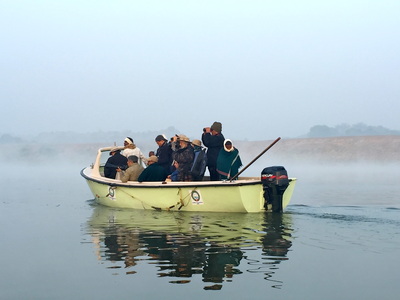
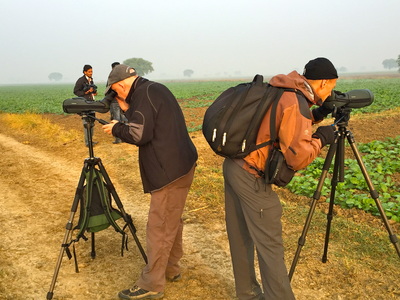
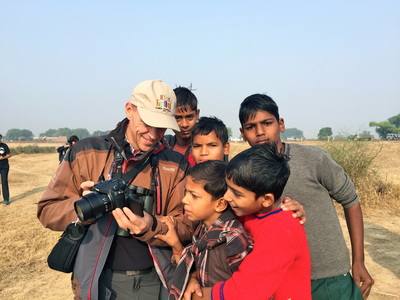
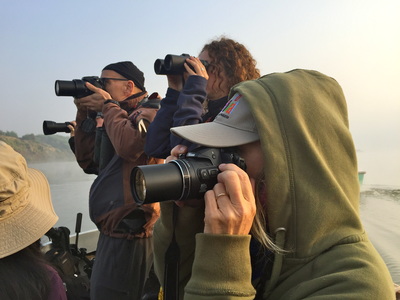
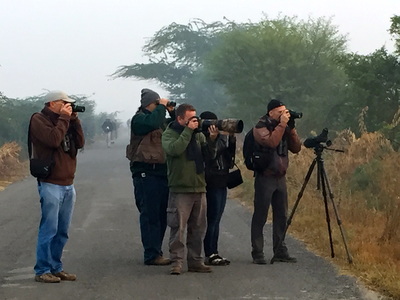
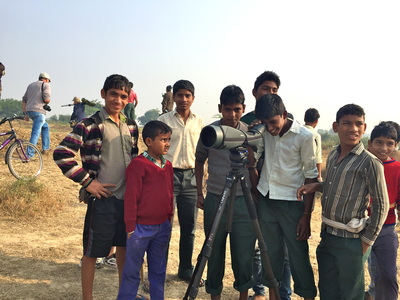
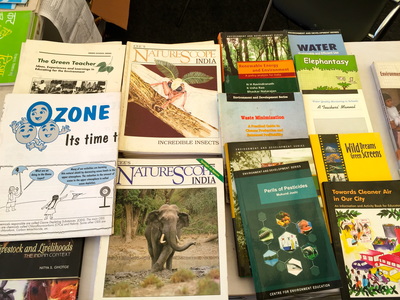
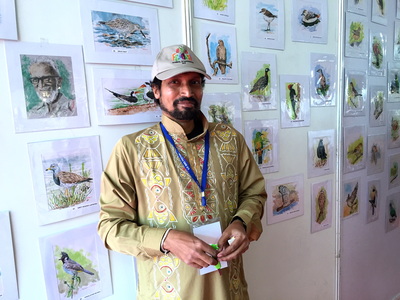
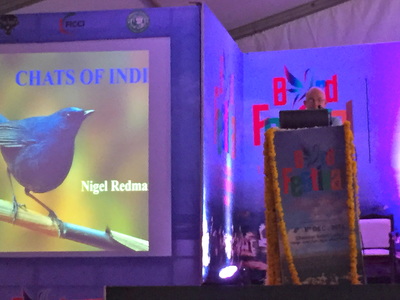
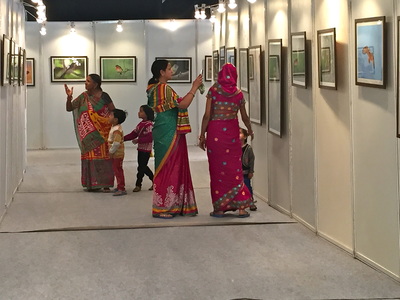
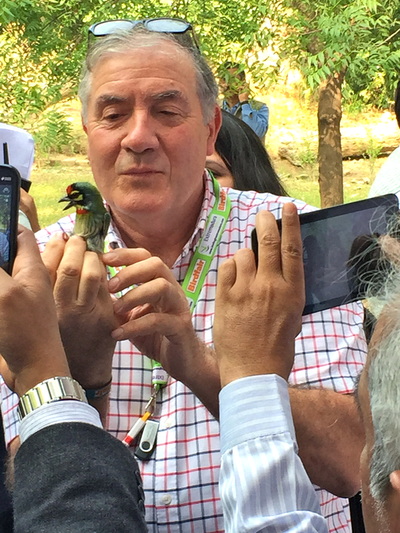
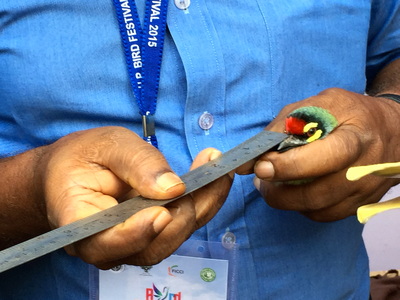
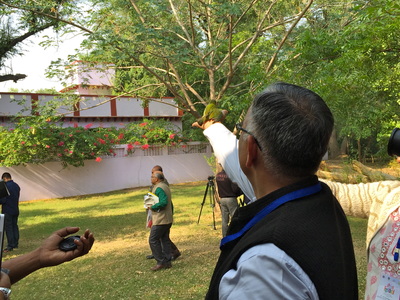
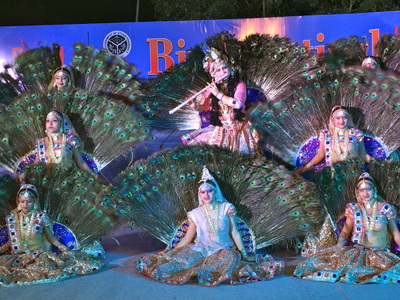
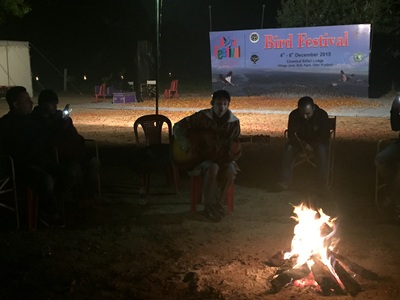
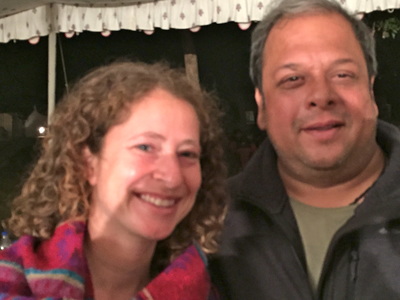
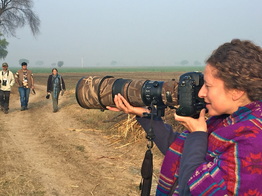
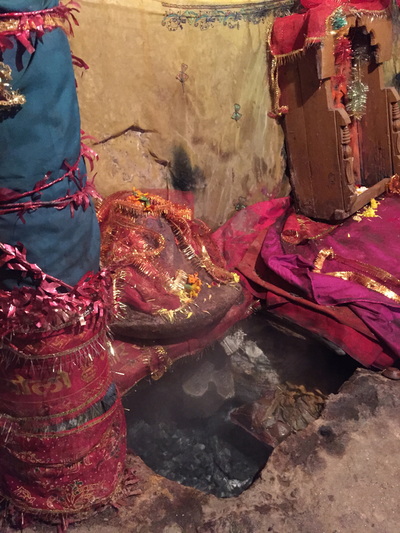
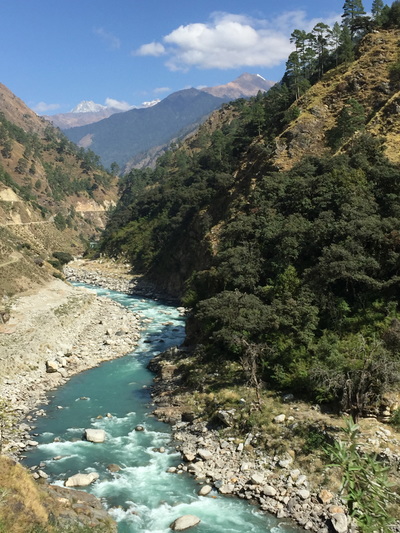
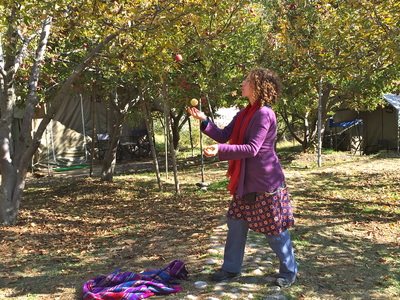
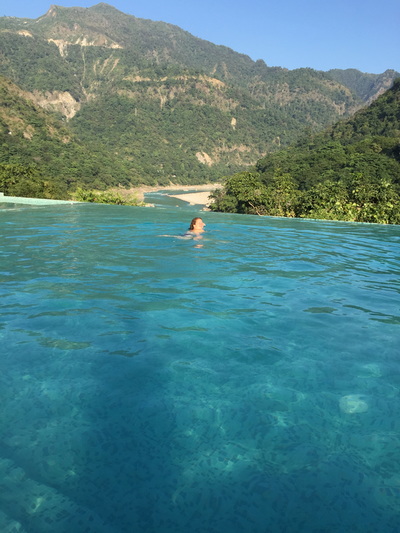
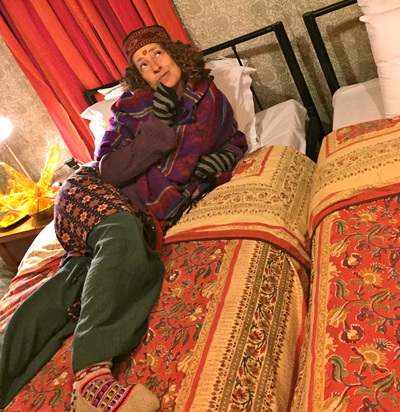
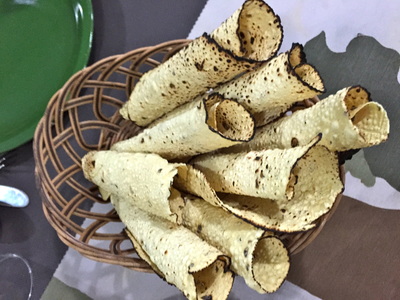

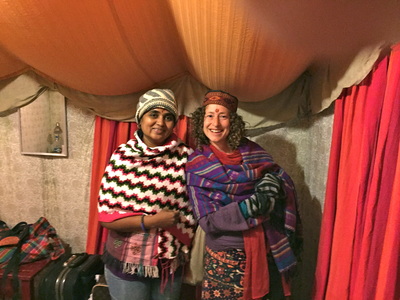
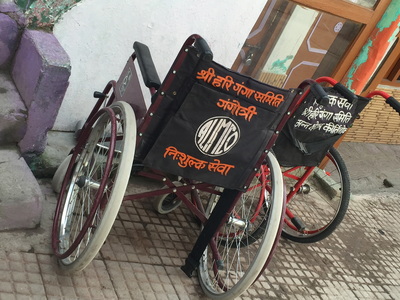
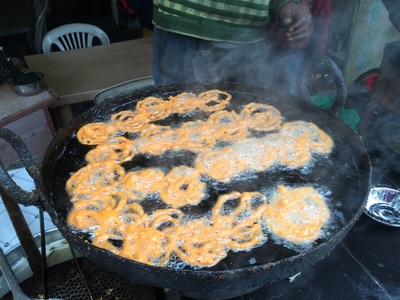
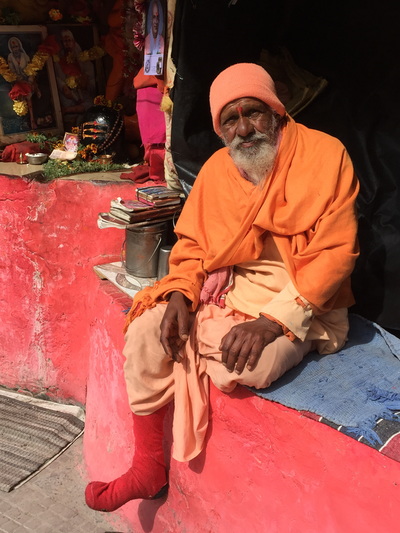
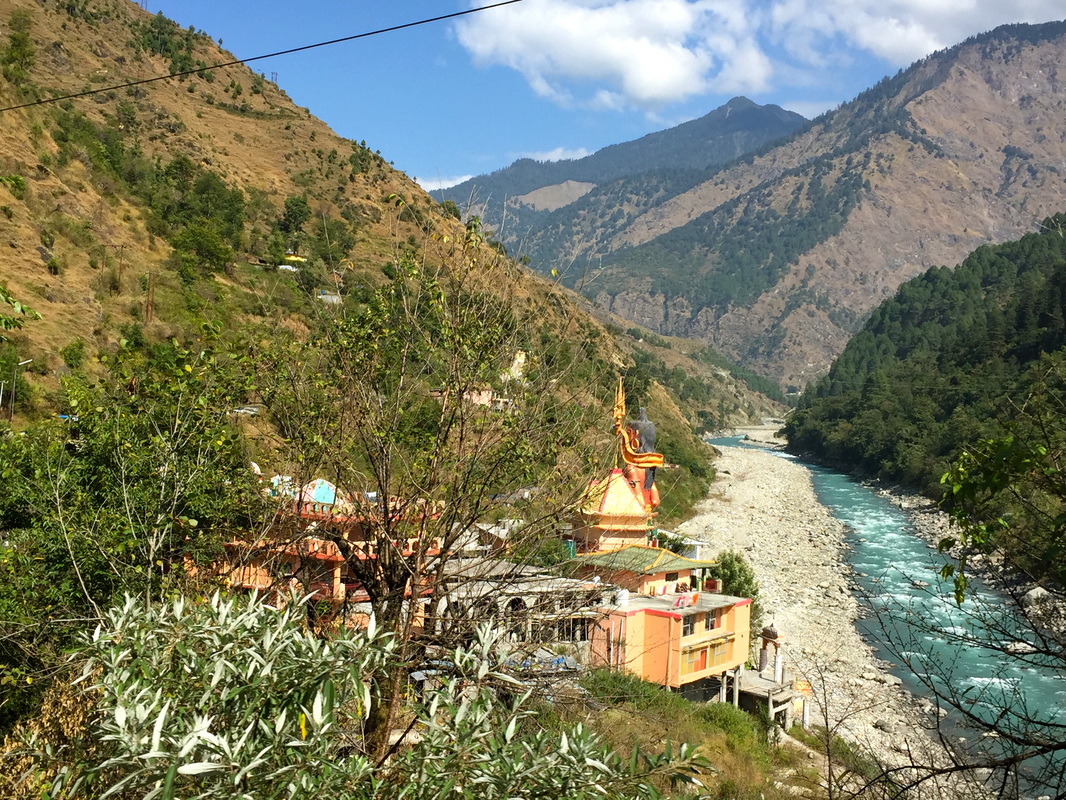
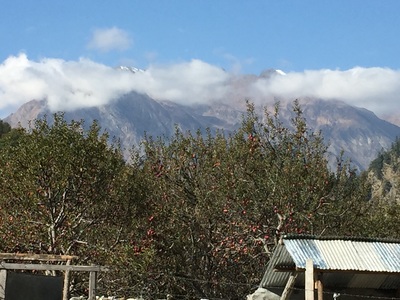
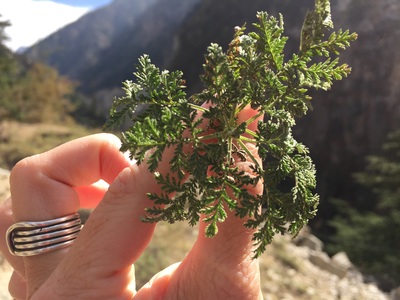
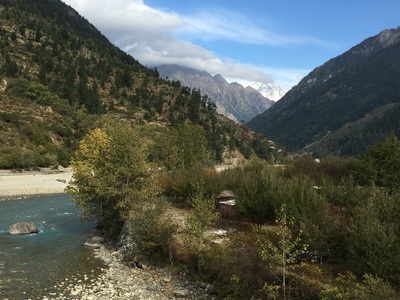
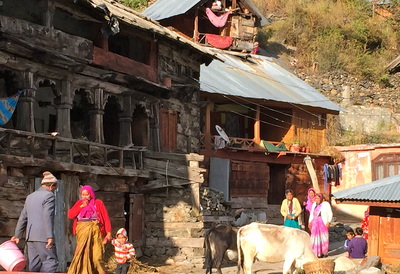
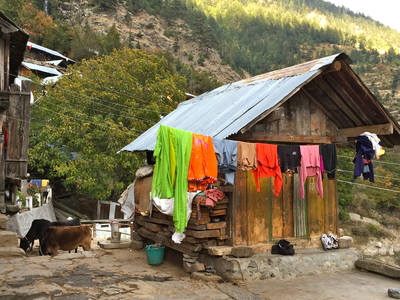
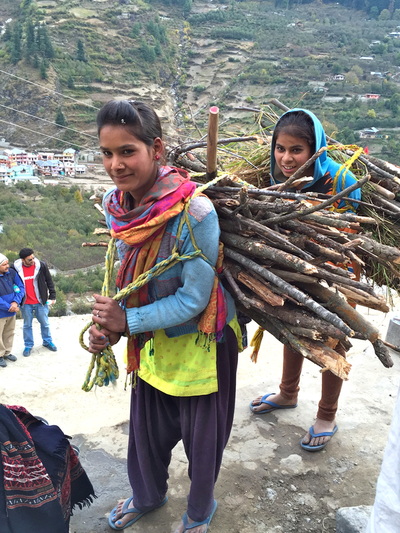
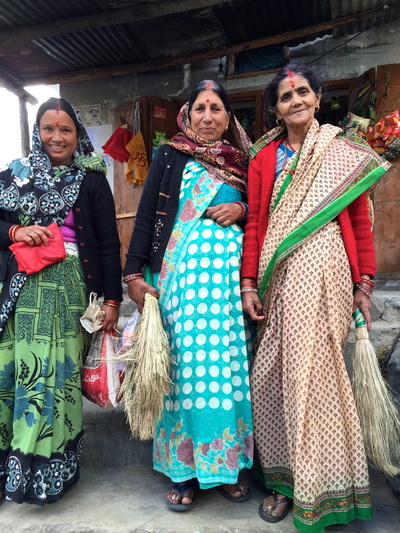
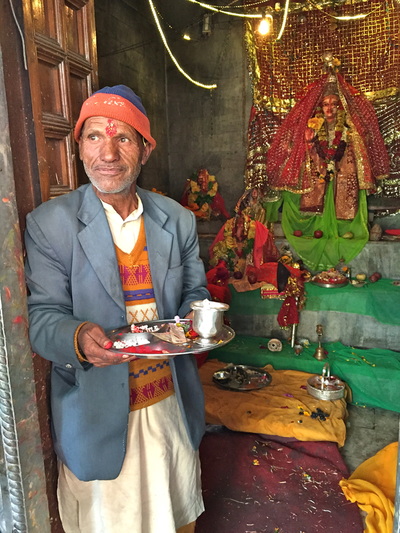
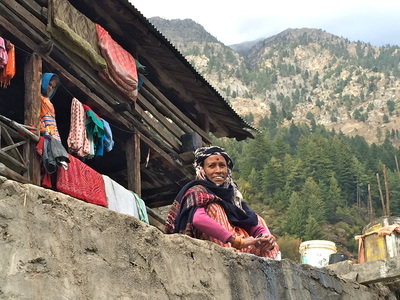
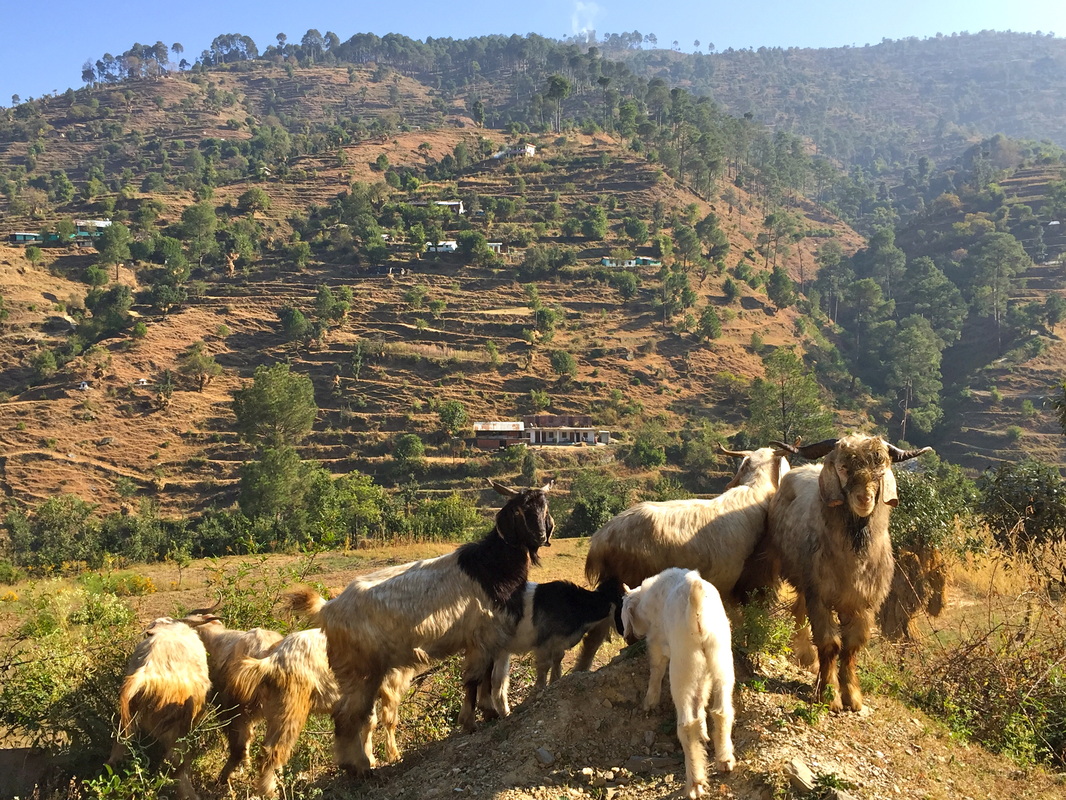
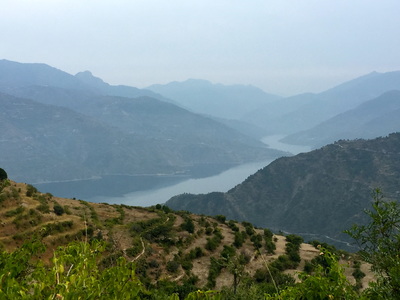
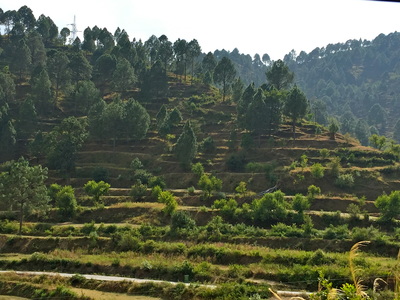
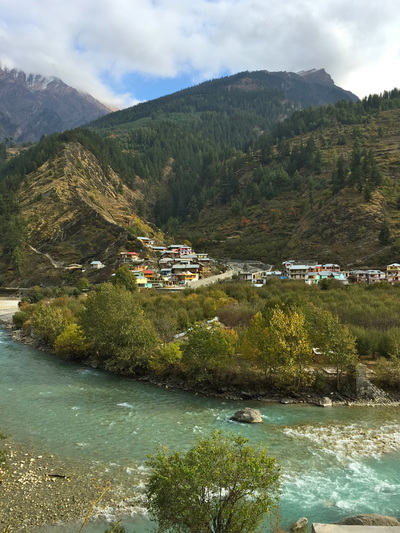
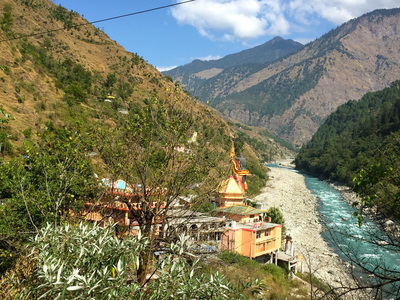
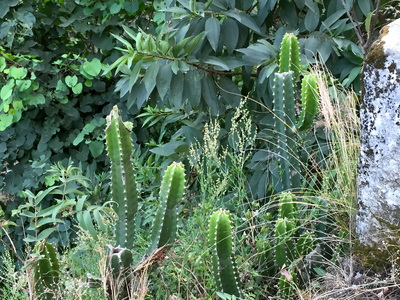
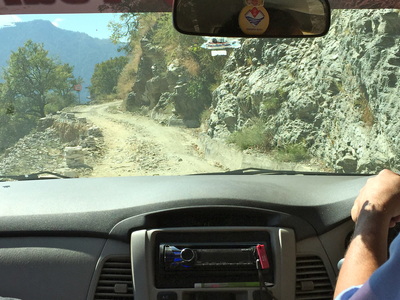
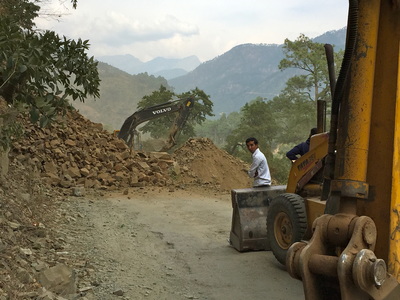
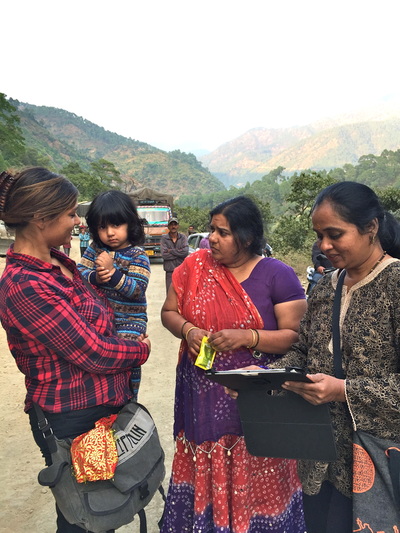
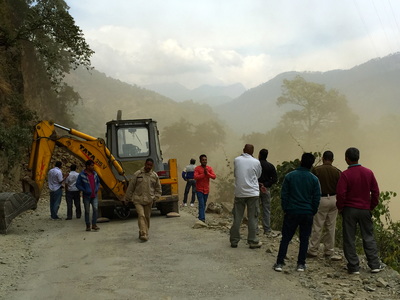
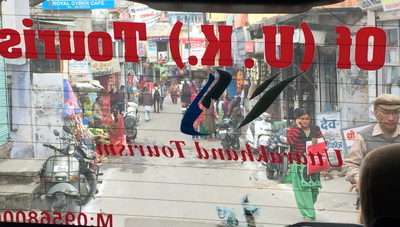
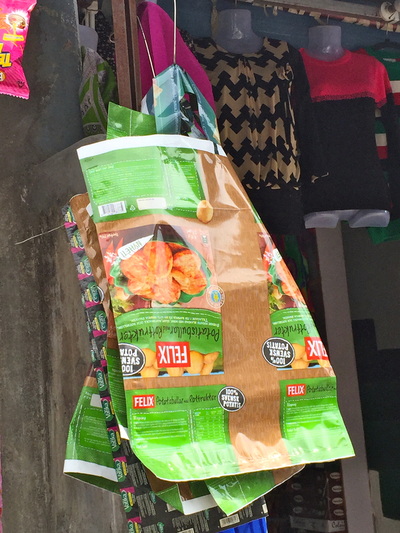
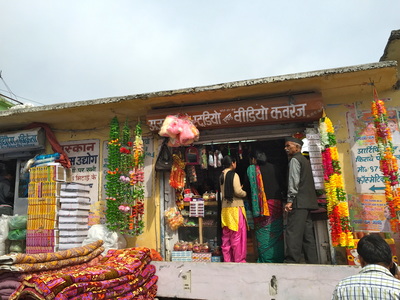
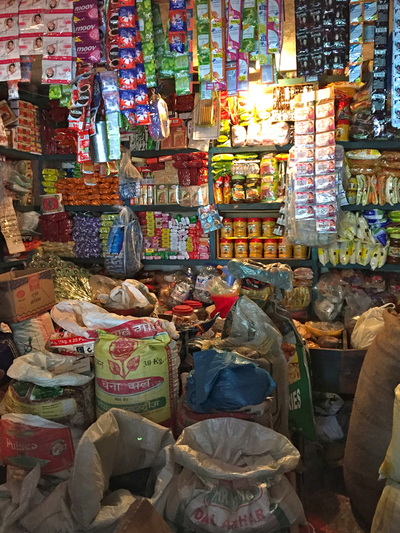
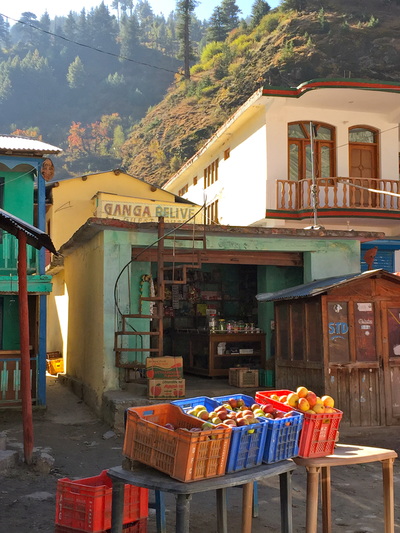
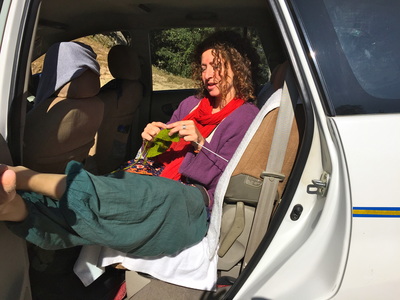
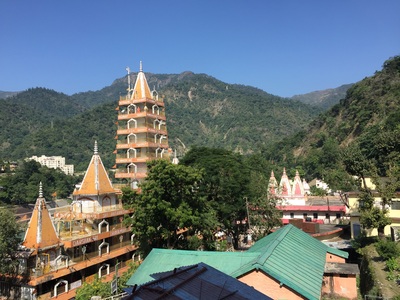
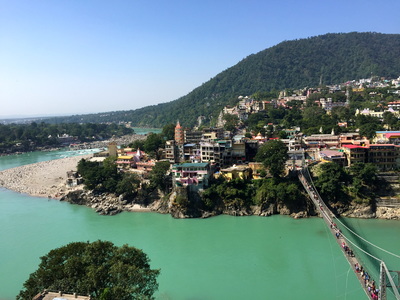
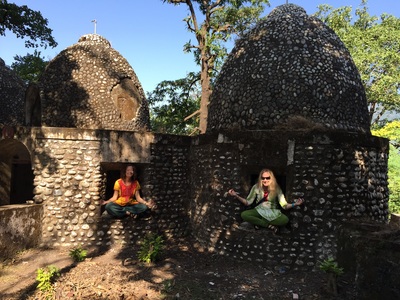
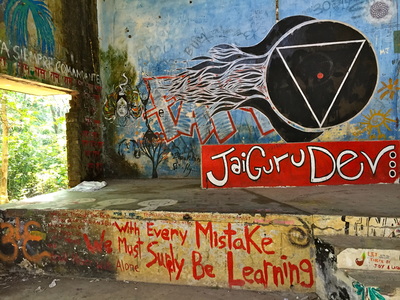
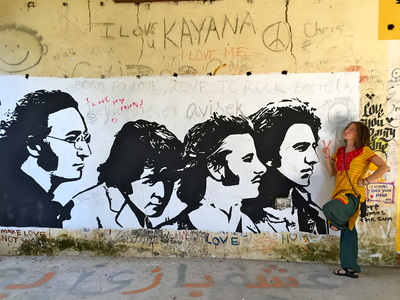
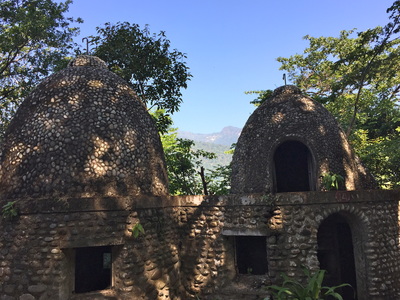
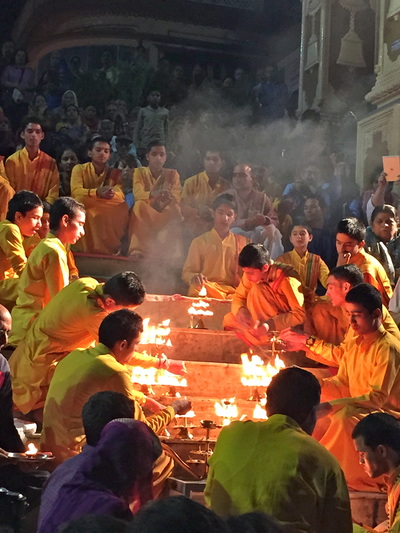
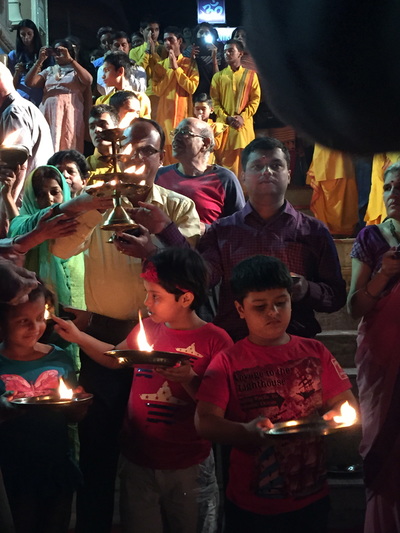
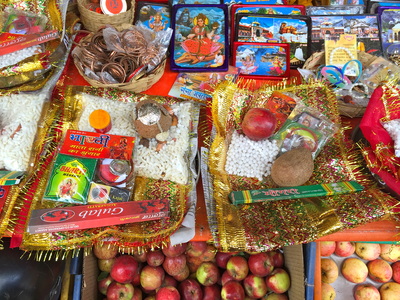
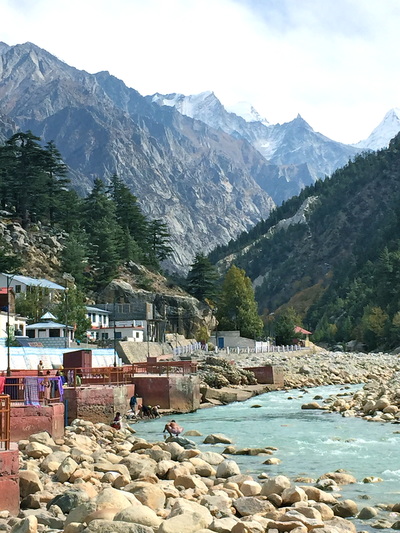
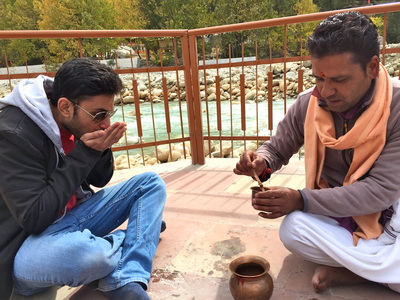
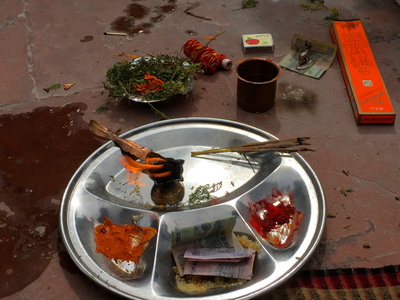
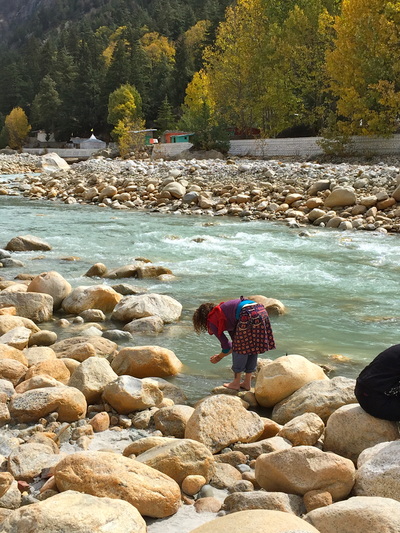
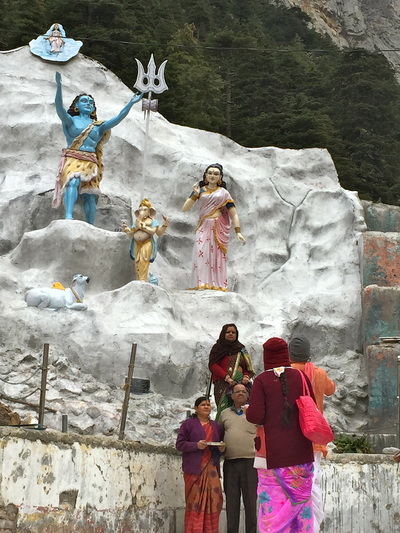
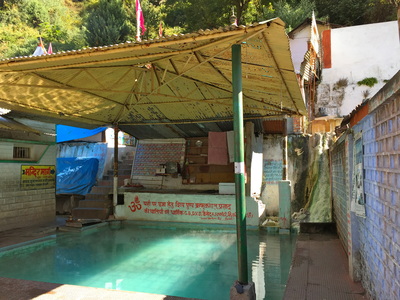
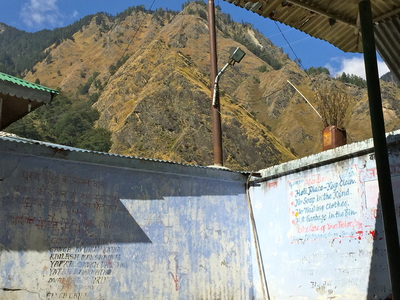
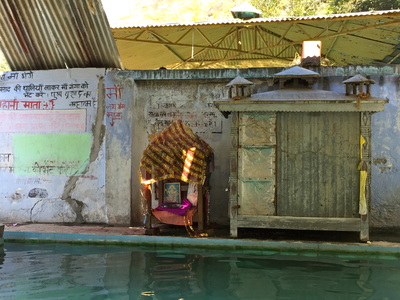
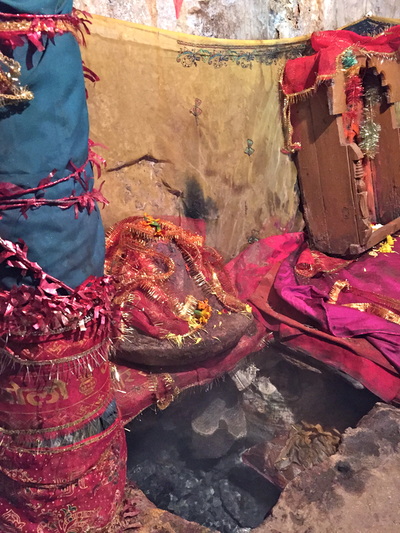
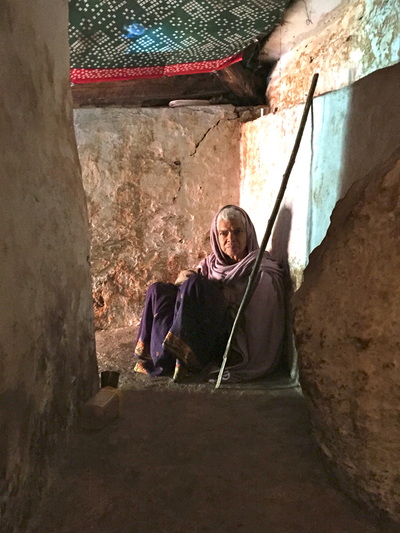
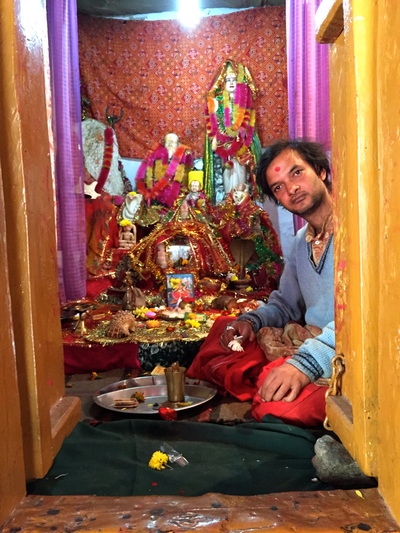
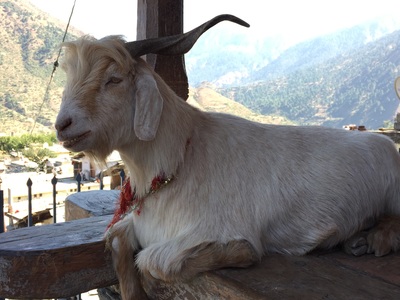
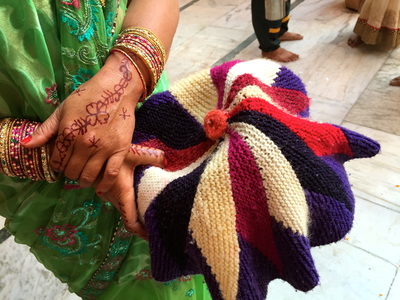

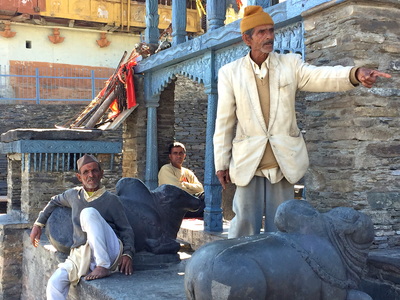
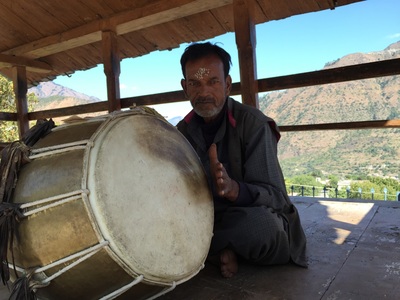
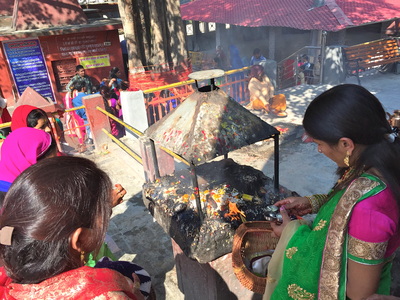
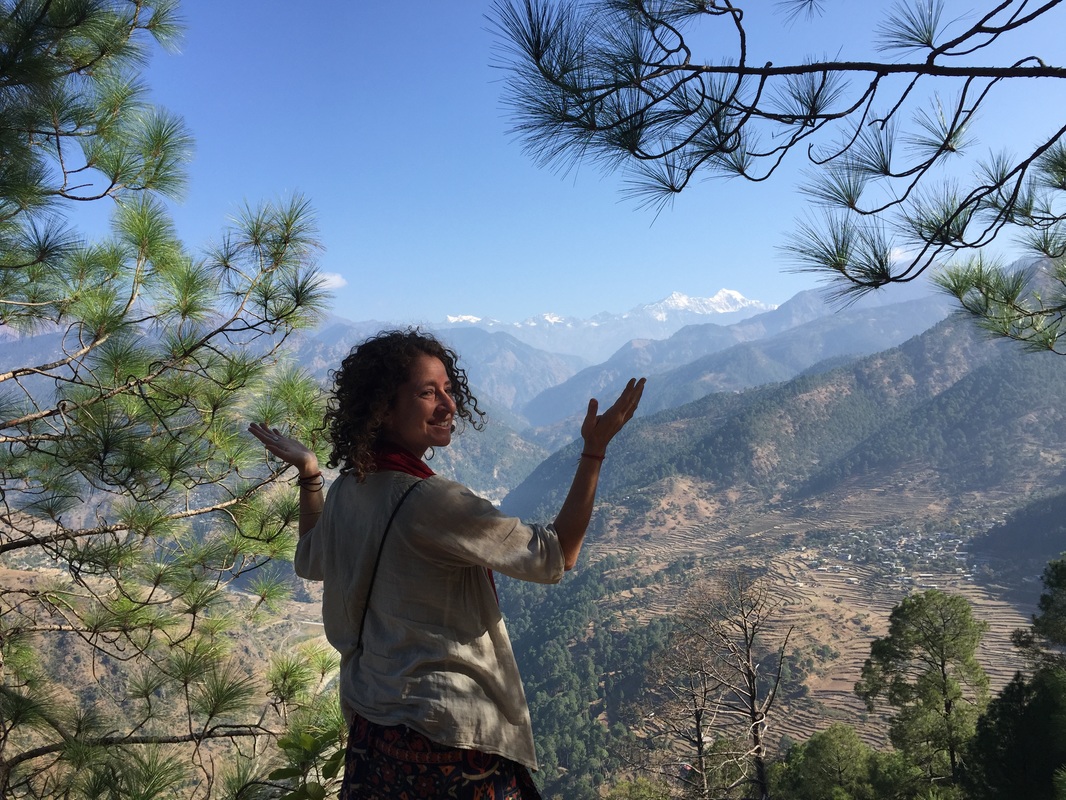
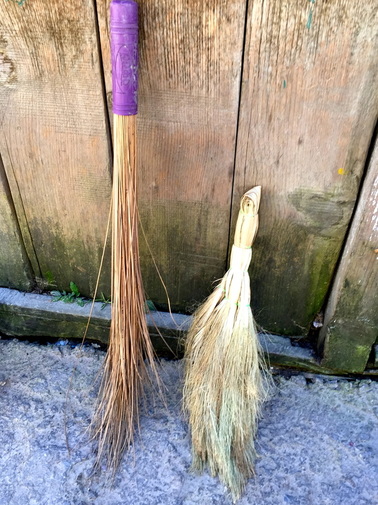
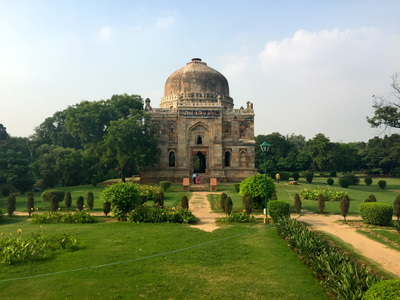
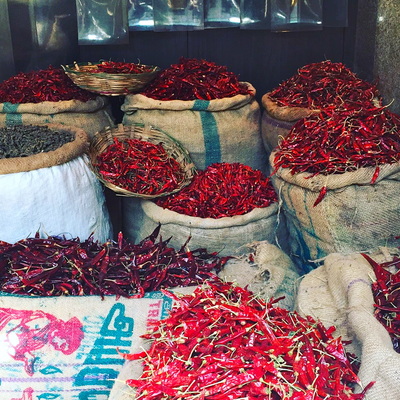
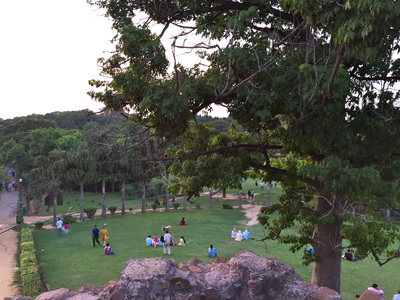
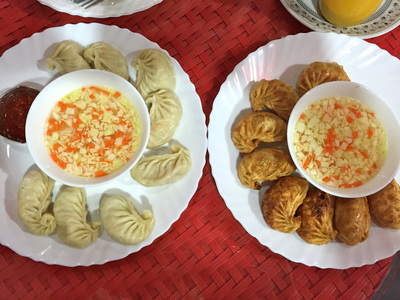
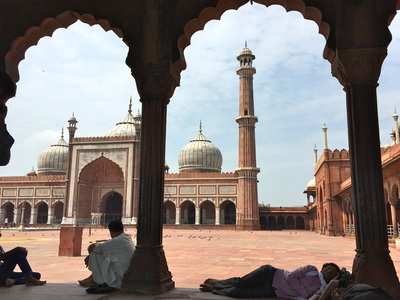
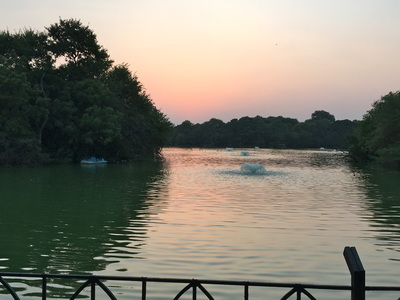
 RSS Feed
RSS Feed